Hyderabad became the capital of Telangana in 2014, when Telangana became a state after separating from Andhra Pradesh. I lived and grew up in Hyderabad from 1971-1992 when it was the capital of Andhra Pradesh. Over the years I have visited many sites in Hyderabad and I continue to visit them whenever I visit my siblings who still live in Hyderabad. I have also included some pictures and information about my undergraduate and graduate Colleges I attended.
Some information on visiting the sites around Hyderabad:
- Plan on spending at least 3 days in this city to cover the important attractions
- Getting around various sites in Hyderabad will be challenging, as the traffic scene in Hyderabad is quite horrendous any time of day/weekday/weekend. The first 5 sites (Charminar, Mecca Masjid, Chowmahalla Palace, Falaknuma Palace, Salar Jung Museum) can be covered in a day as they are within driving distance of each other in an area called the ‘Old City’. Keep in mind that Salar Jung Museum closes at 5pm.
- The next 3 sites on the list of attractions (Birla mandir, Hussain Sagar, Telangana Secretariat) can be combined as they are close to each other.
- Golconda fort – Set aside half day to visit this fort. It is a bit of a drive from the city center, plus you will need to spend at least an hour or 2 to cover all the points of interest within the fort.
- Metro service in Hyderabad – We found it way faster, cleaner and cooler (especially in the summer) to take the metro than getting around in a car. The downside is – none of the sites are near a metro station, you will have to walk or take auto/uber the last few km.
- Best months to visit Hyderabad is between October to February when the temperatures will be tolerable. Worst months to visit is March-June when temperatures will be over 100 F.
- Charminar
- Mecca Masjid
- Chowmahalla Palace
- Falaknuma Palace
- Salar Jung Museum
- Hussain Sagar
- Birla mandir
- Telangana Secretariat and Ambedkar Statue
- Golconda Fort
- Women’s College Koti (Renamed Telangana Mahila Vishvavidhyalayam)
- University of Hyderabad
- Irani Cafe
- Hyderabadi Biryani
Charminar (4 minarets) – Constructed in 1591 by Sultan Mohammed Quli Qutb Shah, the monument is a symbol of Hyderabad and officially incorporated in the emblem of Telangana. There are many stories about why it was built. The most popular one – Charminar was built to acknowledge the elimination of the plague which had affected the entire city immensely during that era. It is believed that the Sultan had prayed for the end of this plague with which his people were suffering. Hence, as the plague ended, he built the Charminar as a tribute to Allah.
I have been to Charminar a few times when I was young, but did not pay much attention to its history or architecture then. We visited the monument more recently in April of 2025. The area around Charminar has been made more pedestrian friendly and the monument itself has been restored and looks majestic. We paid a local guide who took the extra trouble to explain in detail about Charminar as well as other attractions around Hyderabad like the Golconda Fort, Mecca Masjid, Chowmahalla Palace etc.
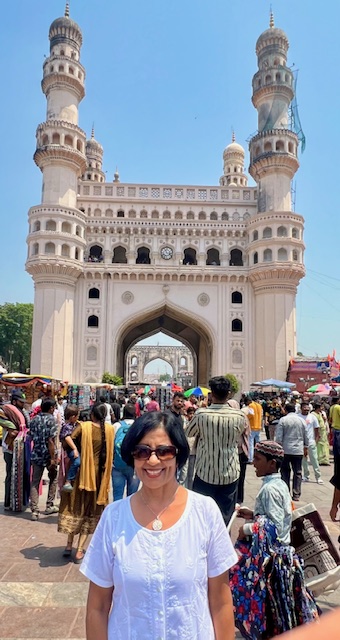
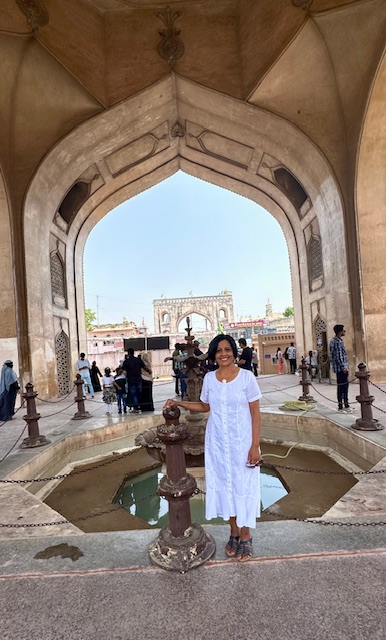
The interior walls and windows of Charminar are adorned with intricate stucco work reflecting the architectural brilliance of the era. The central courtyard has a small fountain for ablution. A narrow spiral staircase with 54 steps in one of the minarets lead to the first floor balconies from where you get view of the city, Mecca Masjid, Unani hospital and more.
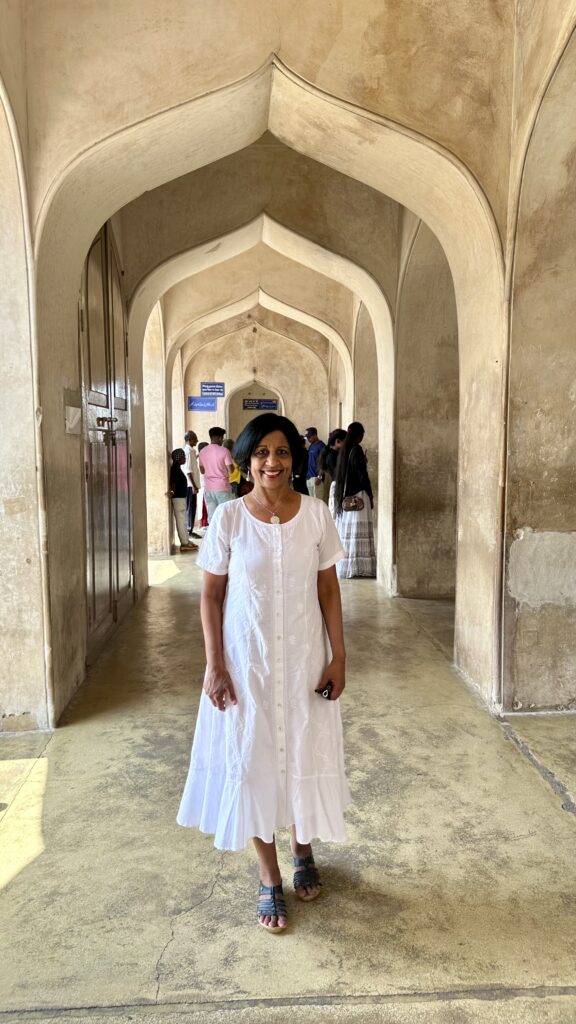
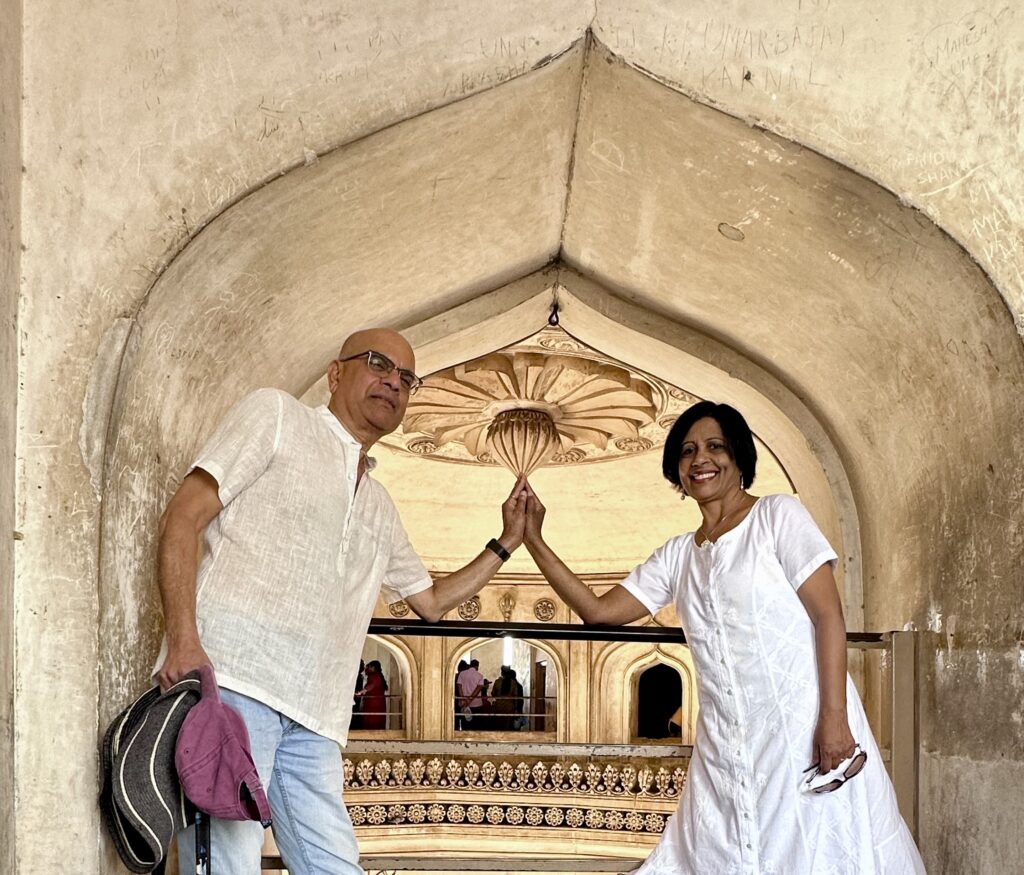
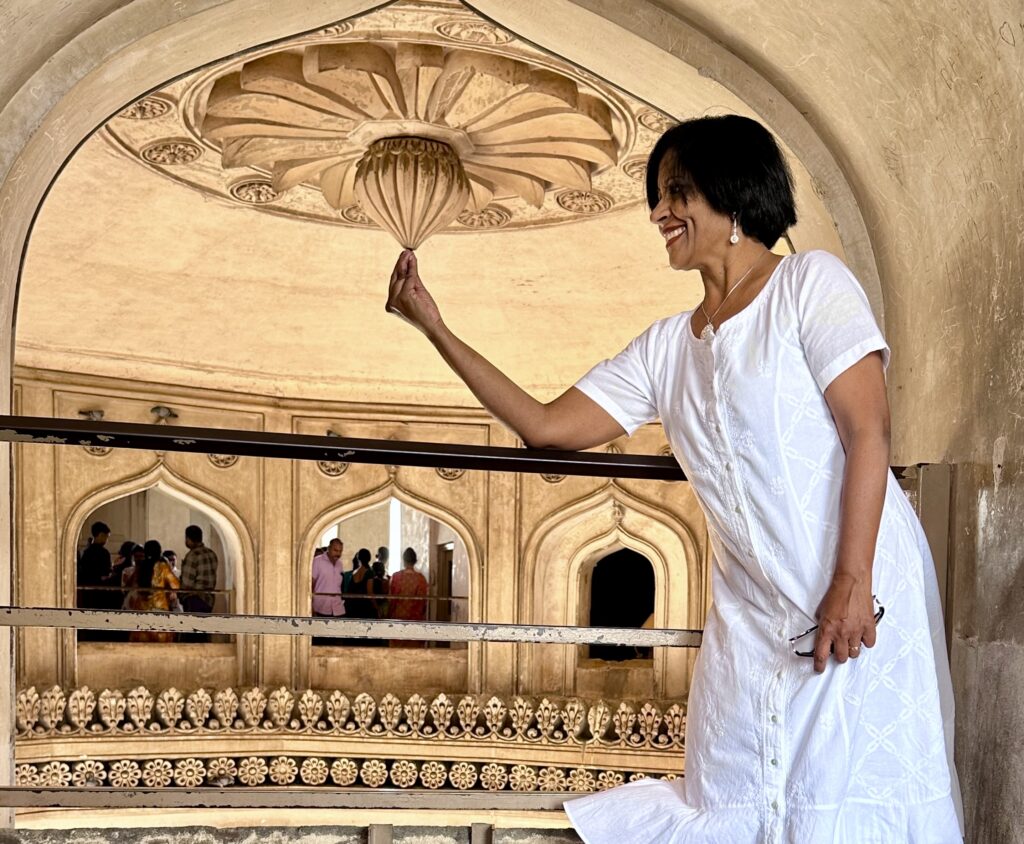
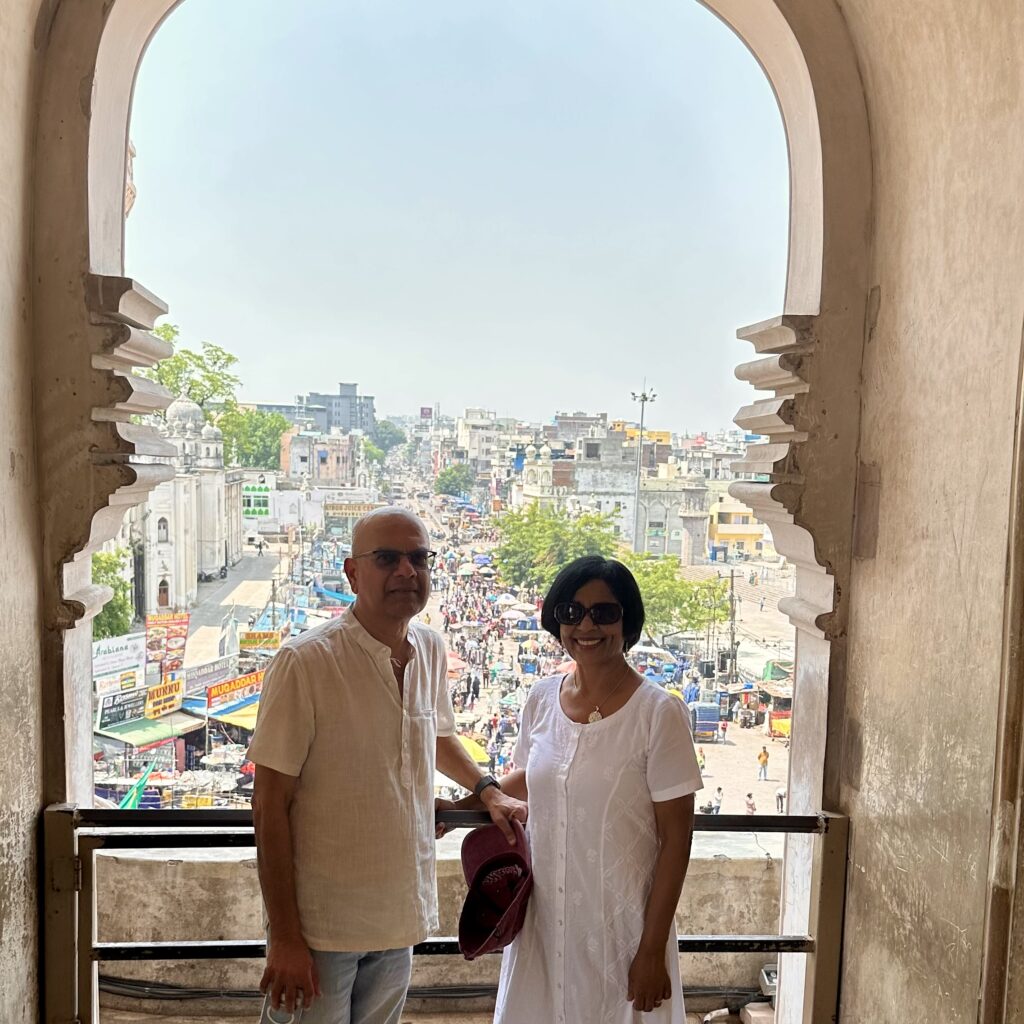
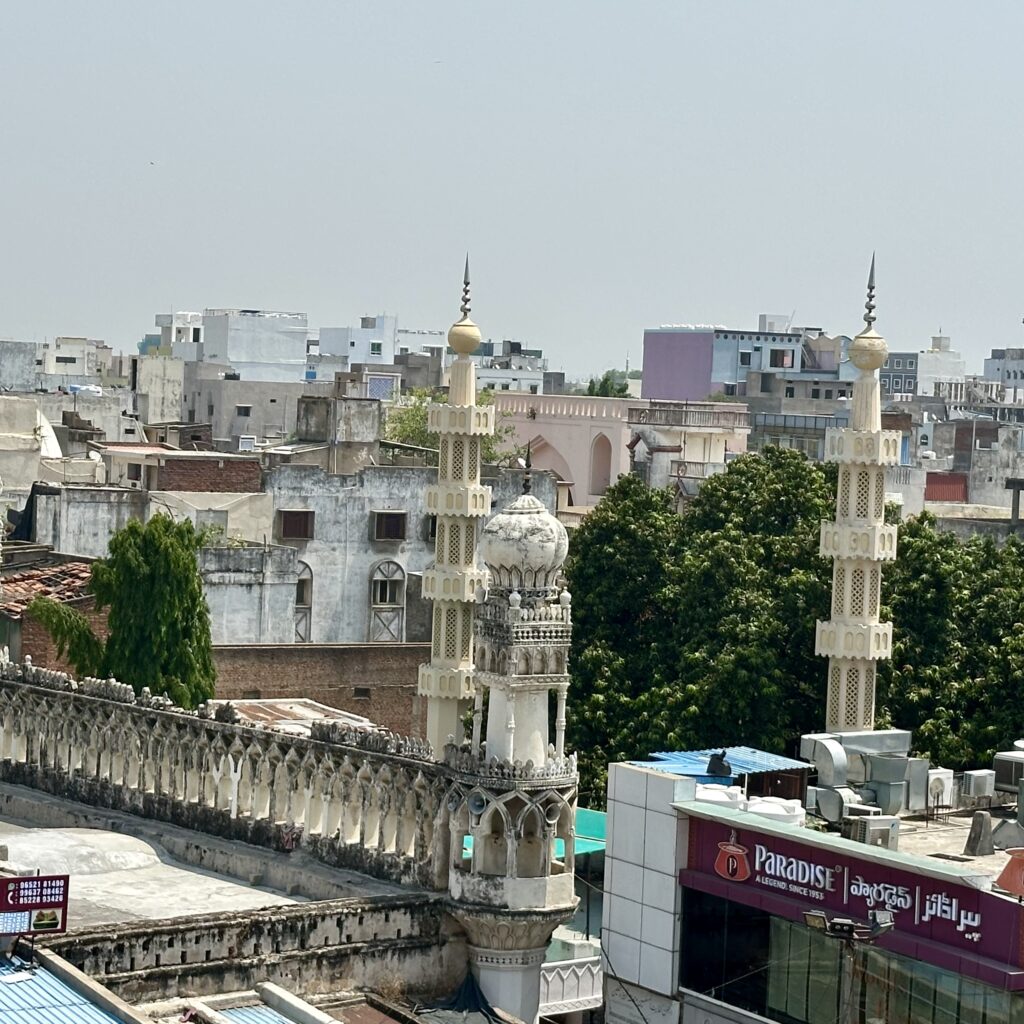
Unani Hospital – You can get a view of this building from the first floor balcony of Charminar. Unani hospital near Charminar is a public hospital for general and Unani medicine established during the reign of Nizams. Unani medicine is Perso-Arabic traditional medicine as practiced in Muslim culture in South and Central Asia.
Hyderabad High Court – You get a great view of the domes of Hyderabad High Court from the balcony of Charminar. Founded by the 7th Nizam of Hyderabad, Mir Osman Ali Khan, It was established as a High Court for the erstwhile Hyderabad State and in November 1956 after formation of Andhra Pradesh renamed as High Court of Andhra Pradesh. In 2014, after bifurcation of Andhra Pradesh the Court was again renamed as High Court of Judicature at Hyderabad.
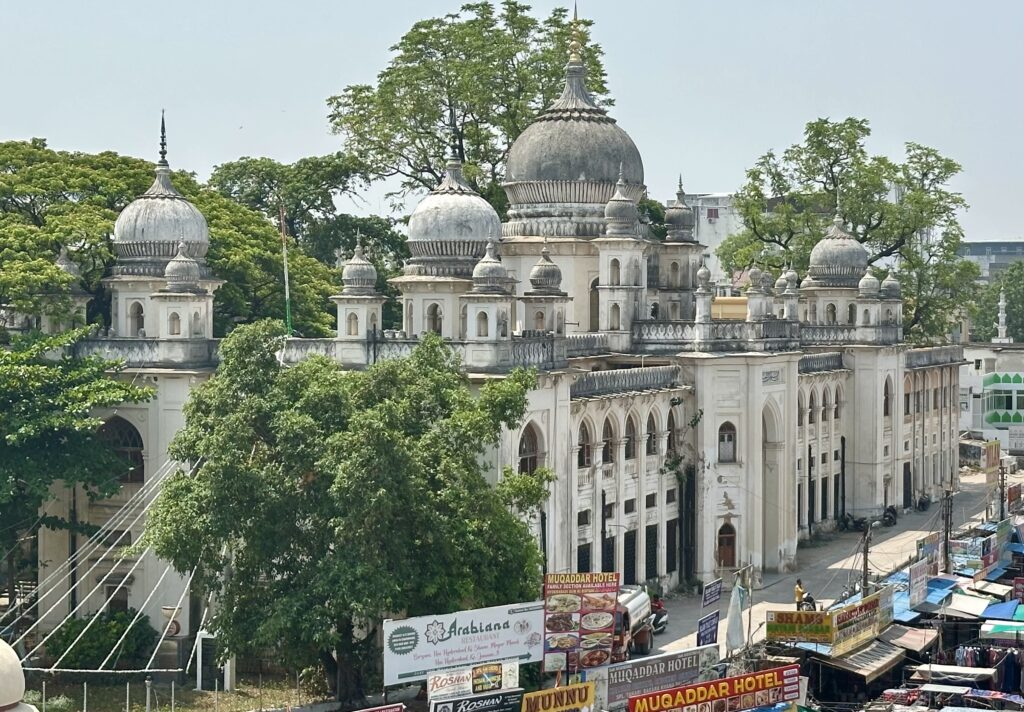
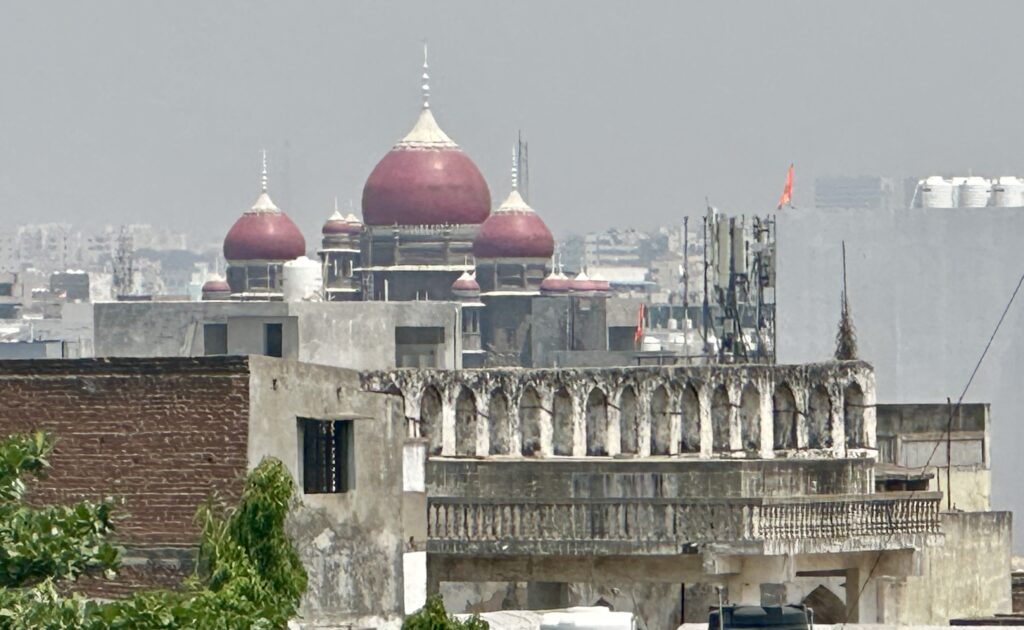
Mecca Masjid – You can see this mosque from the top of Charminar and is located within walking distance from Charminar. Mecca Masjid is a Sunni mosque and the largest mosque in the city and one of the largest in the country. The mosque is modeled after the Grand Mosque in Mecca. Construction began in 1614 by Sultan Muhammad Qutb Shah and was completed in 1693 by Aurangzeb.
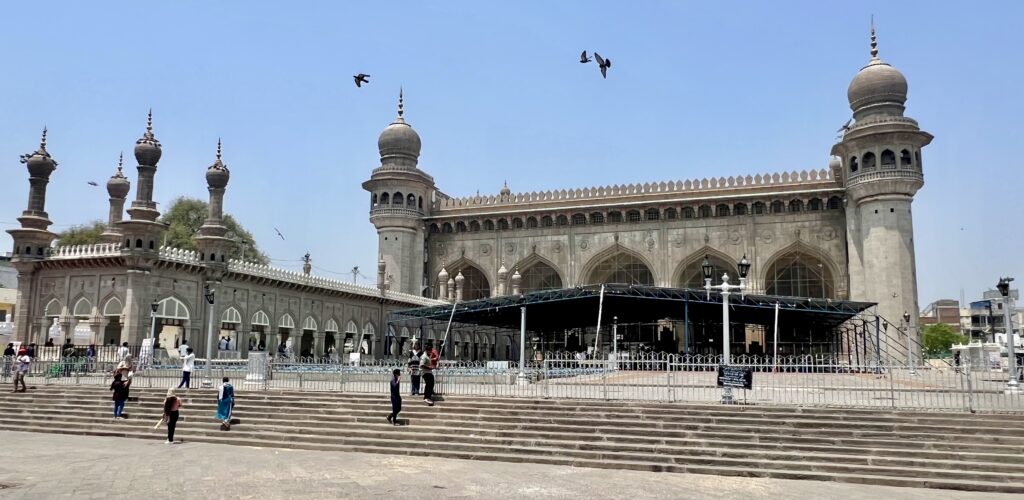
Chowmahalla Palace – It was the seat of power of the Asaf Jahi dynasty (1720-1948) and was the official residence of the Nizams during their reign. The palace has been converted into a museum and the ownership still lies with the family. The palace was constructed at the location of an earlier palace of the Qutb Shahi dynasty and Asaf Jahi dynasty close to the Charminar. Construction of the palace, as it stands today, was started by Nizam Ali Khan Asaf Jah II in 1769. He ordered the building of four palaces -Aftab Mahal, Afzal Mahal, Tahniyat Mahal and Mahtab Mahal, from which the nomenclature of Chau Mahalla is derived.
We drove to this palace after visiting Mecca Masjid, a 15 min drive. You can take pictures with your mobile if you pay extra at the ticket counter. Plan on spending about 1-1.5 hours here.
Chowmahalla Palace, Tahniyat Mahal – captures the essence and grandness of the Mughal era, with exhibitions of sparkling chandeliers, Mughal and European furniture, textiles, artistinal objects and grand cutlery. Various aspects of opulent life have been re-created through the Palace. The diwan-khana in the main hall houses a luxurious throne with the masnud and a ceremonial sword.
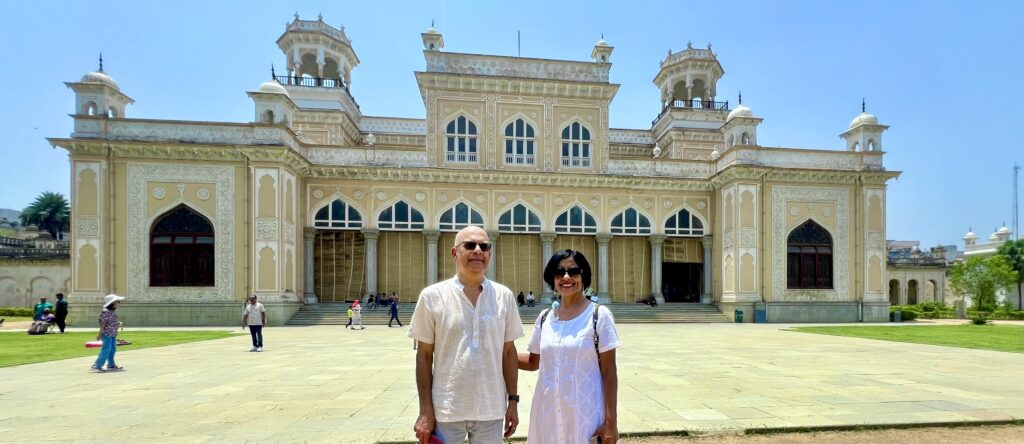
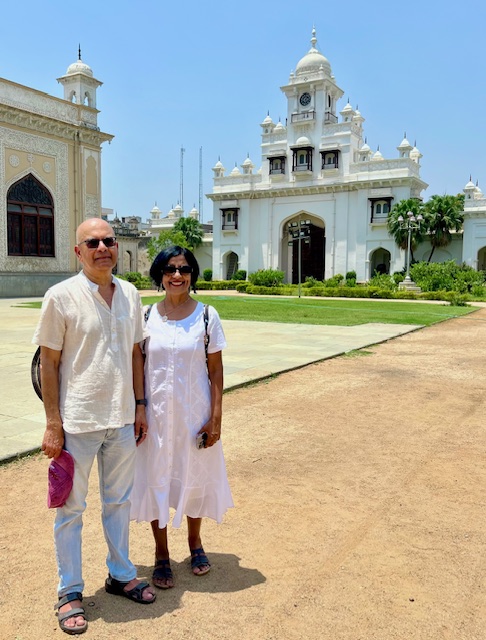
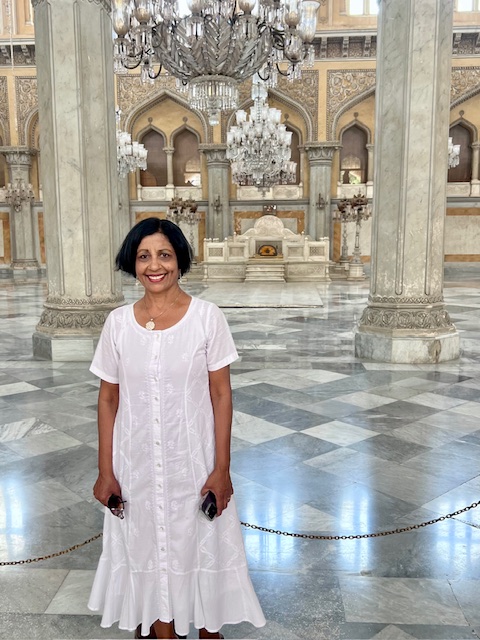
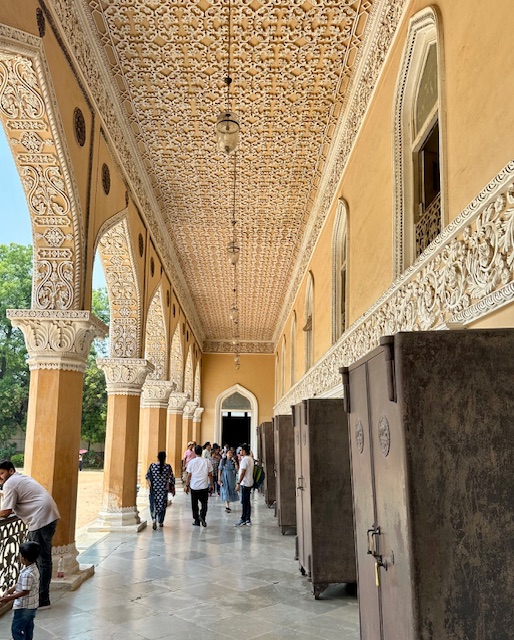

Chowmahalla Palace – Hall of Heritage Crockery
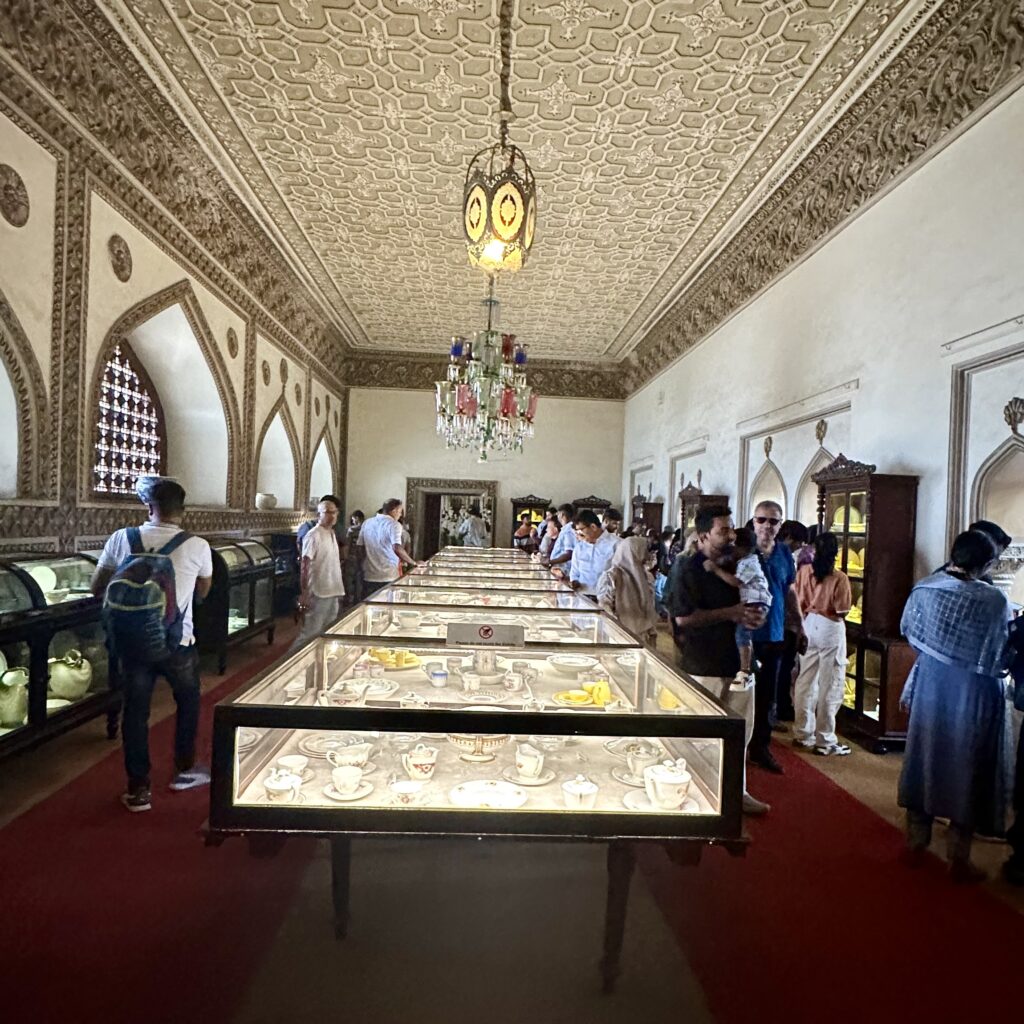
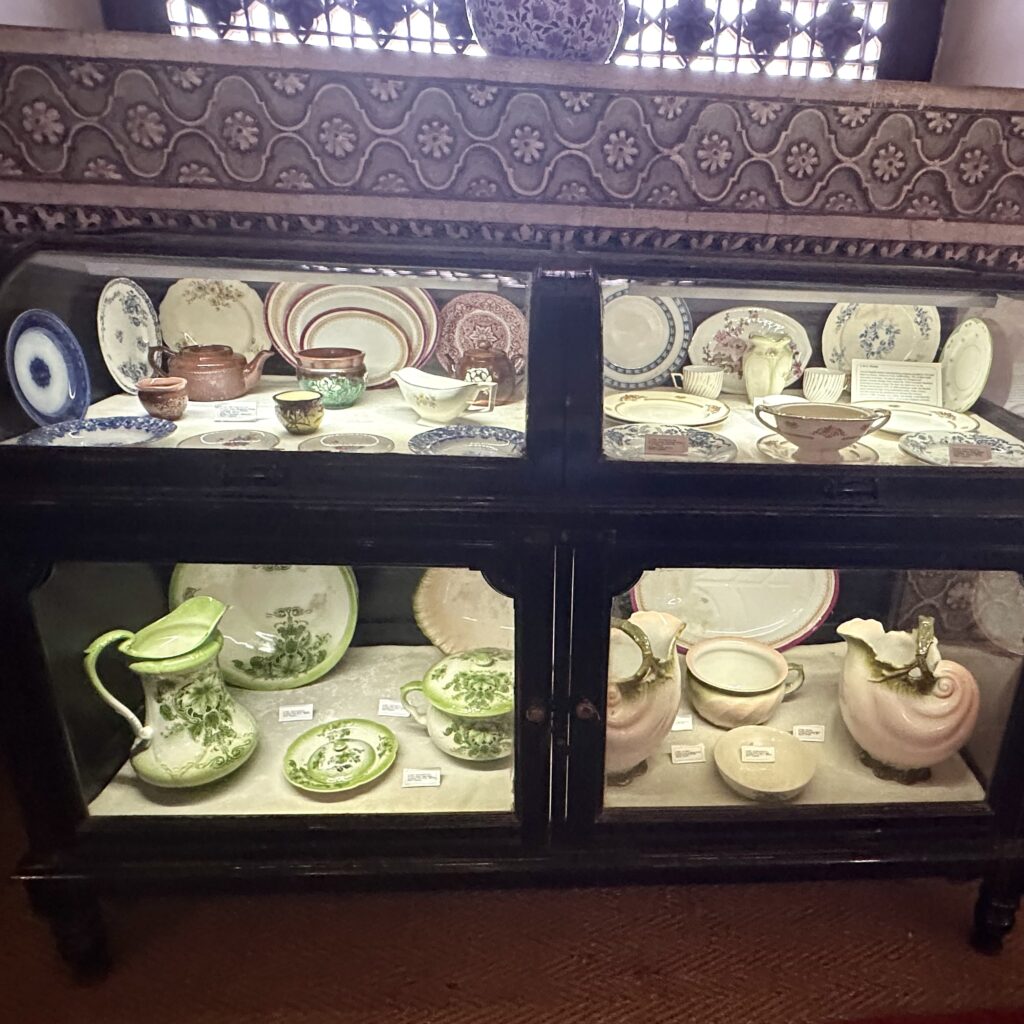
Chowmahalla Palace – Weapons display
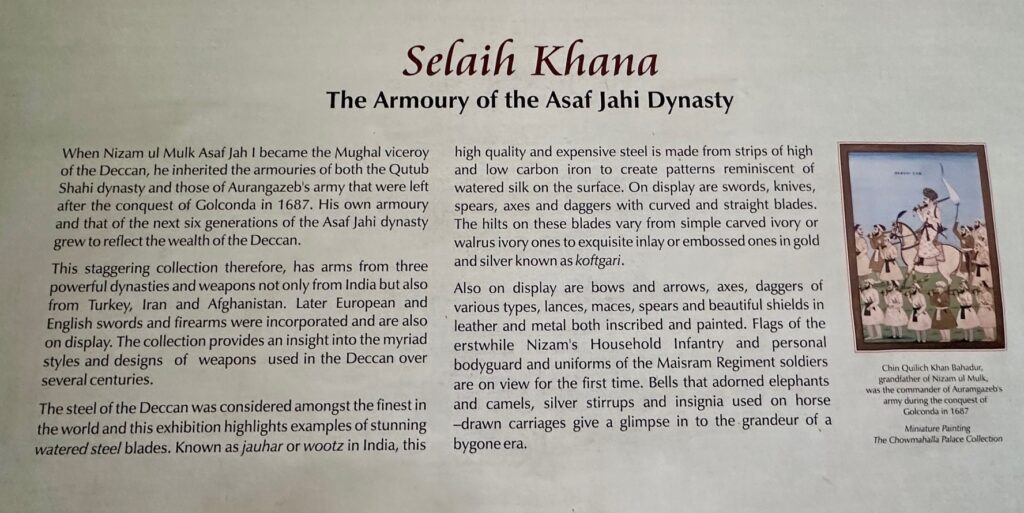
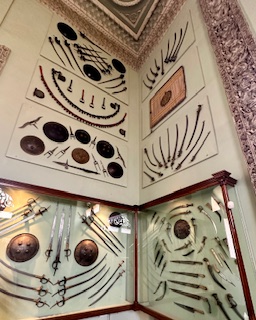
Chowmahalla Palace – Vintage Car display
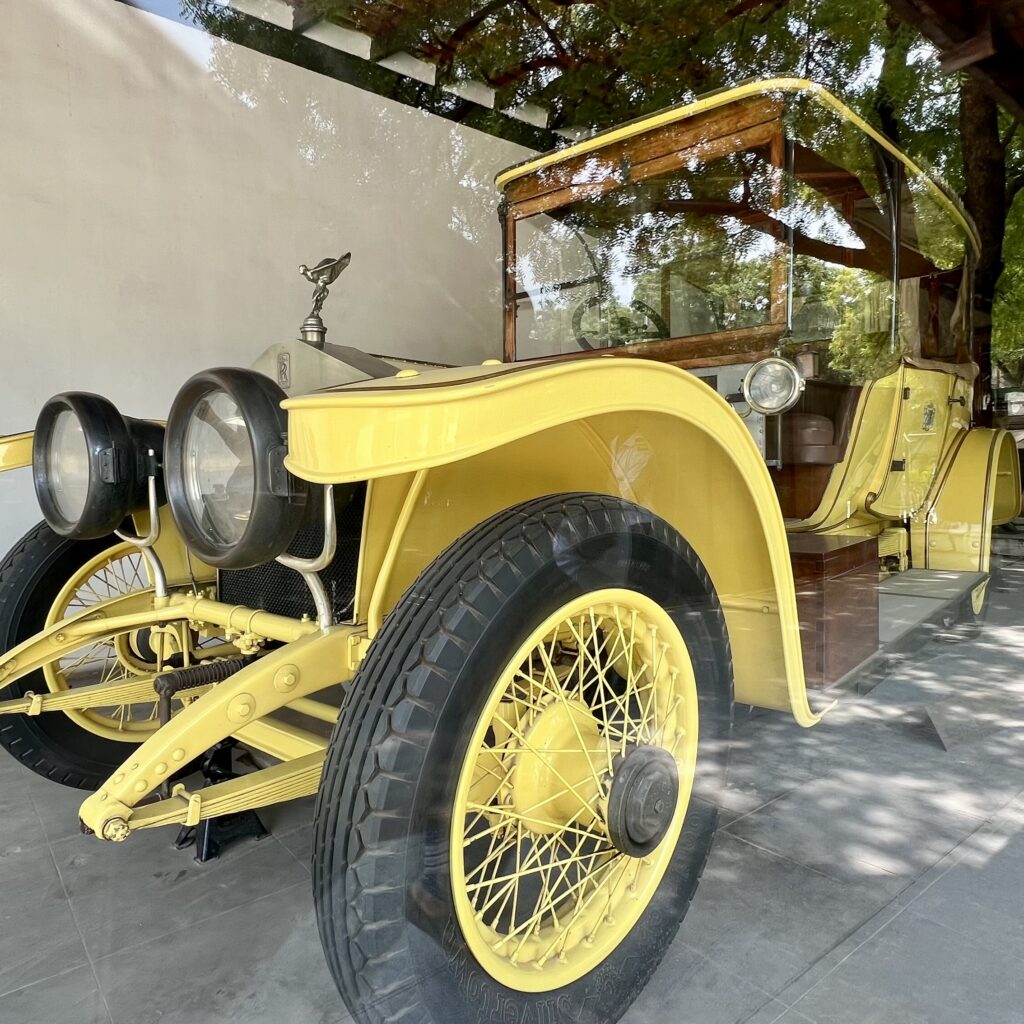
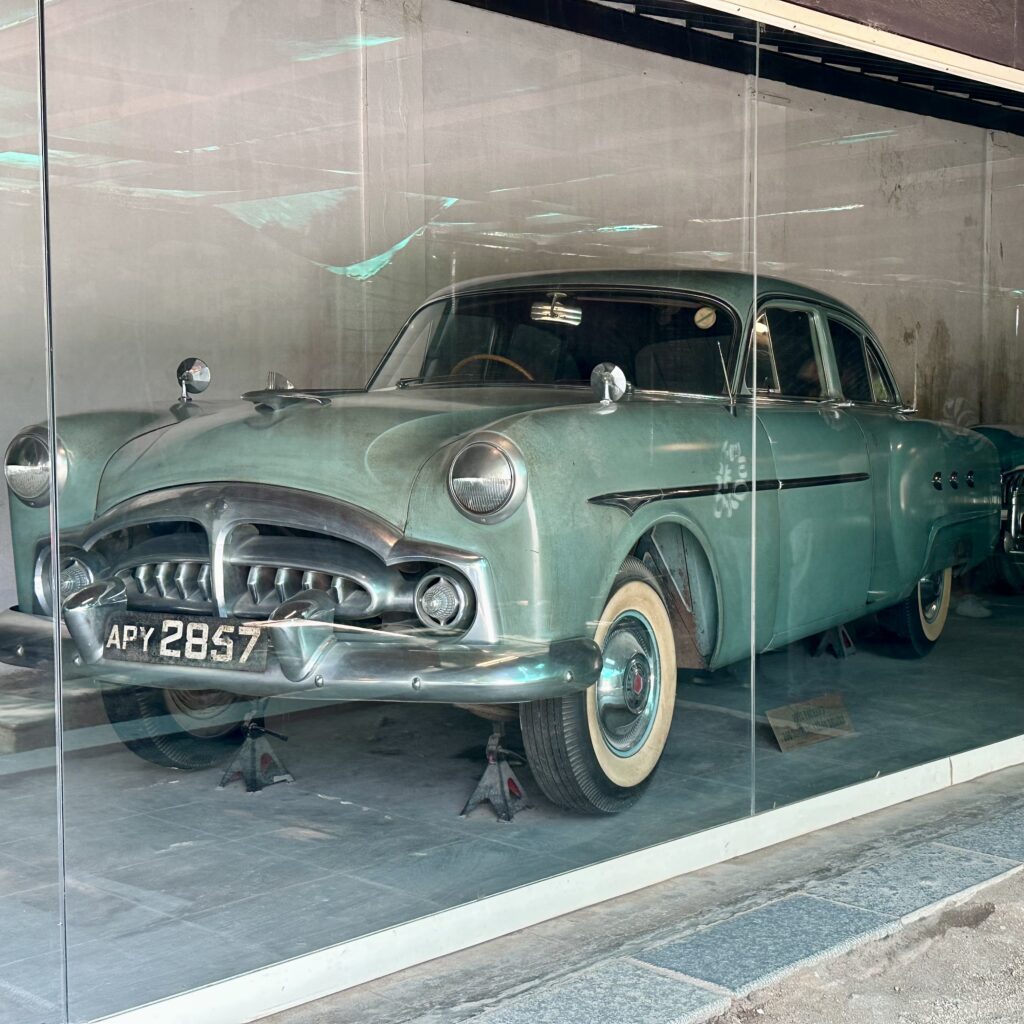
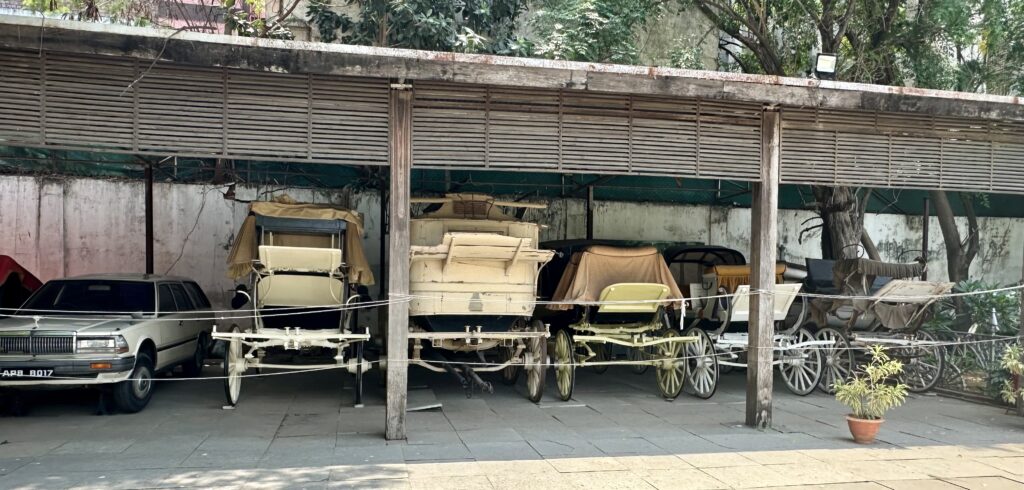
Chowmahalla Palace, Afzal Mahal – The Royal Drawing Room has found its home at Afzal Mahal. Upon approaching the main hall, visitors are invited to gaze upon the unique marble statue depicting two wrestlers in action, in the open verandah. Since the time of the Fifth Nizam, the structure was used as the drawing room to receive foreign dignitaries & guests.
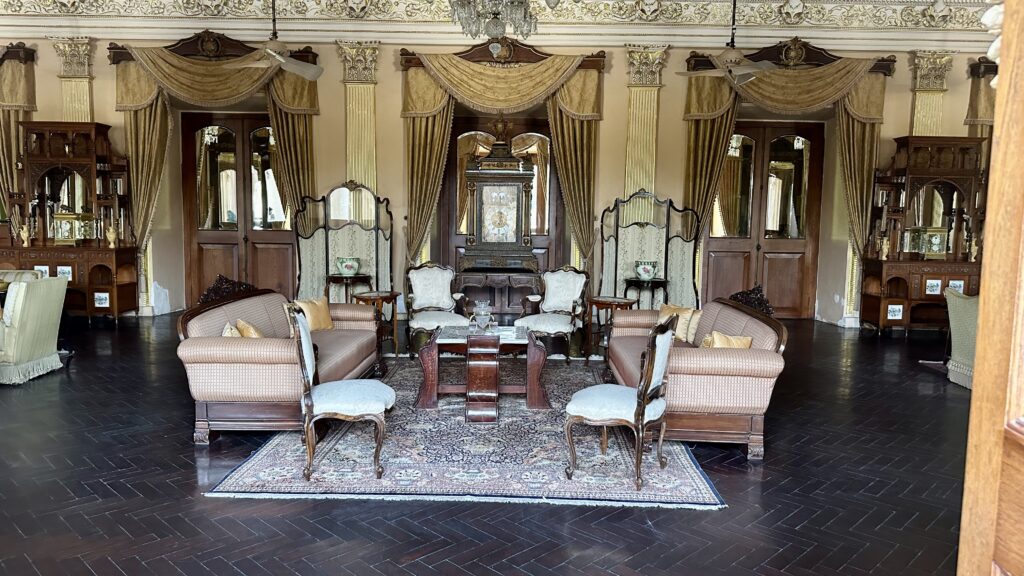
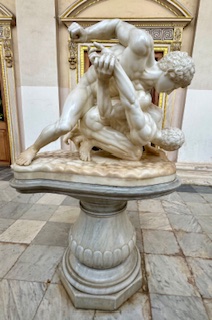
of wrestlers
Falaknuma Palace – The Palace was built in 1894 and was home to the Nizam of Hyderabad, who was once the world’s wealthiest man. The palace was built on a hilltop 2,000 feet above Hyderabad. The palace hosted royal receptions and gatherings. Falak-numa means “Like the Sky” or “Mirror of Sky” in Urdu. The palace was renovated in 2010 and is today a part of Taj Group and has been renamed as Taj Falaknuma Palace.
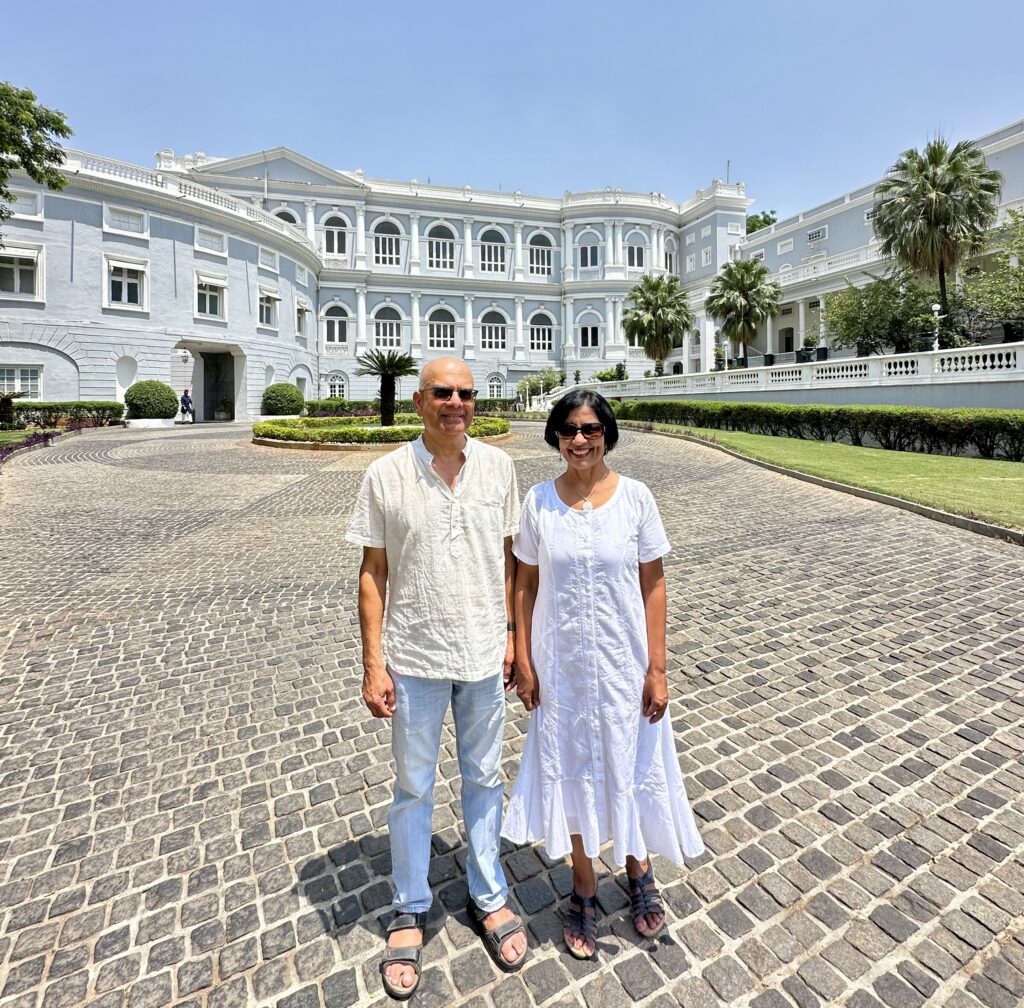
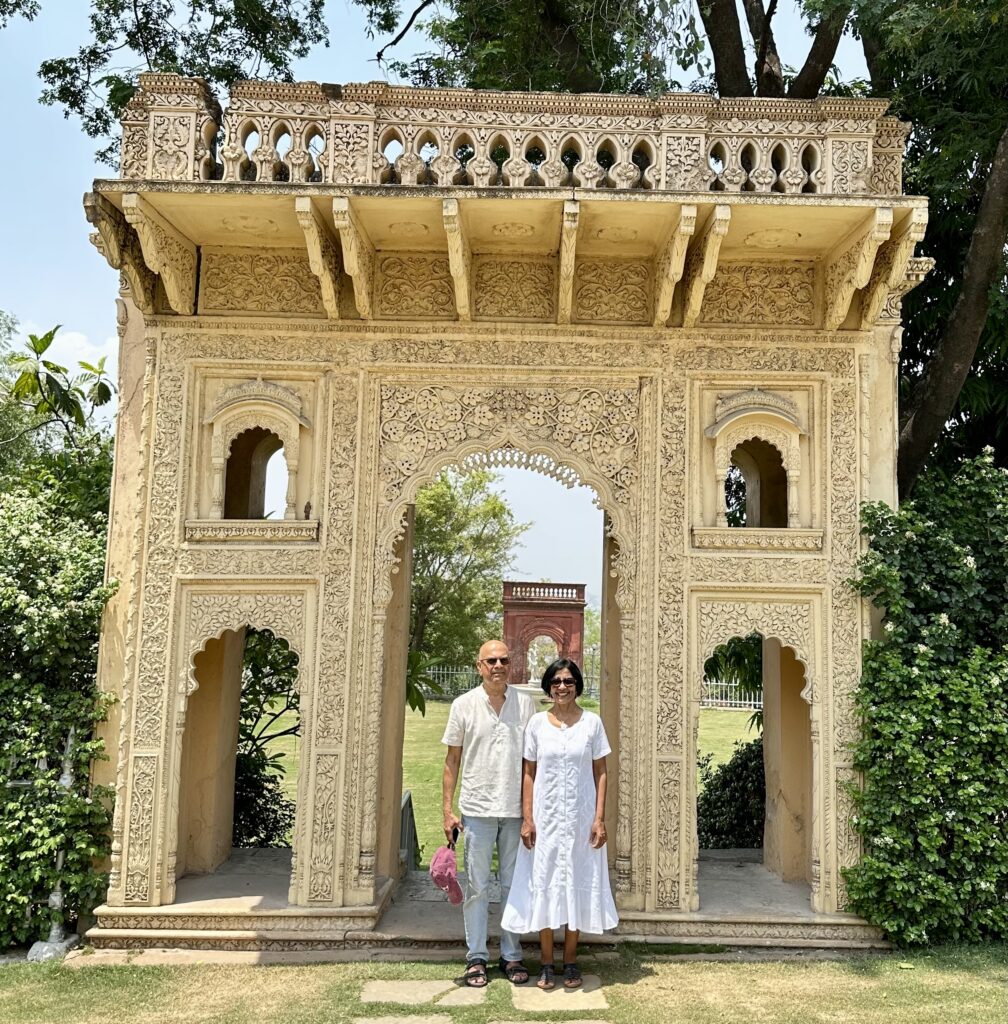
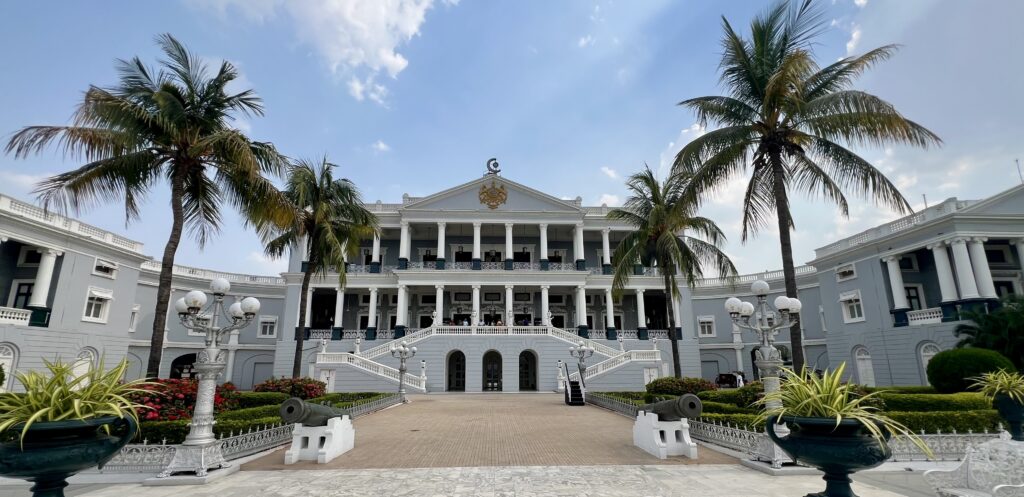
To visit this place, you can do one of the following:
- Book a room for at least one night
- Make a lunch reservation ($100/person)
- Make a high Tea reservation – cheapest option (about $50/person)
We made a lunch reservation which turned out to be an elaborate, 5-course meal. Food was excellent but we felt stuffed and sleepy by the end of it. We then joined 45-min tour of the palace at 3pm.
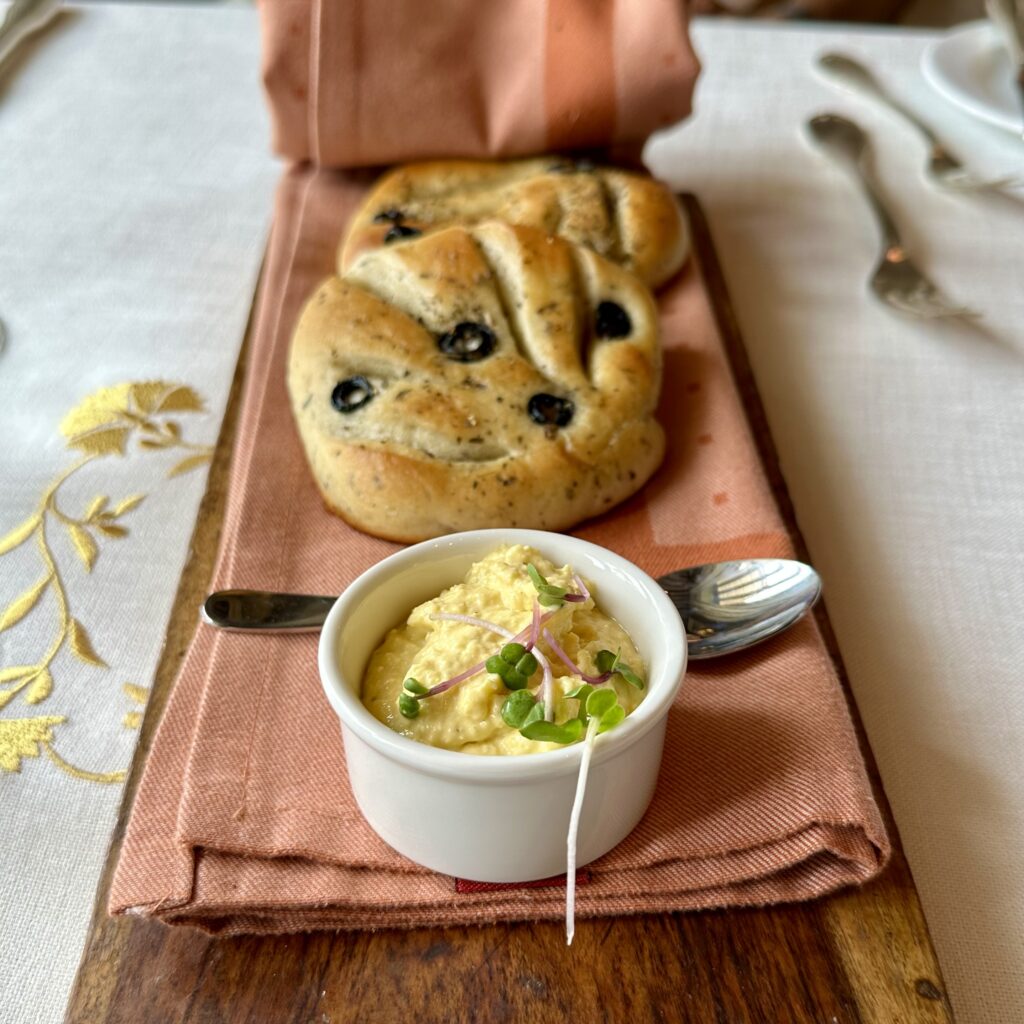
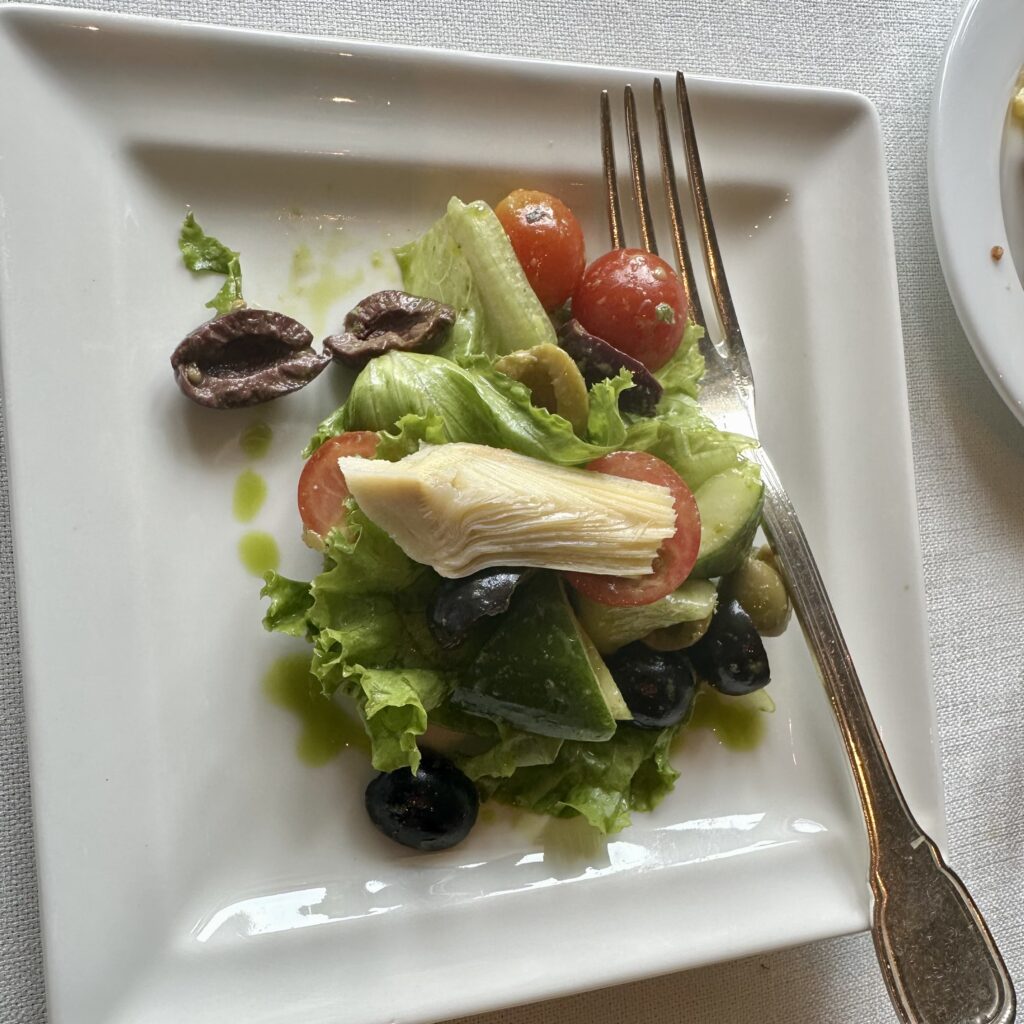
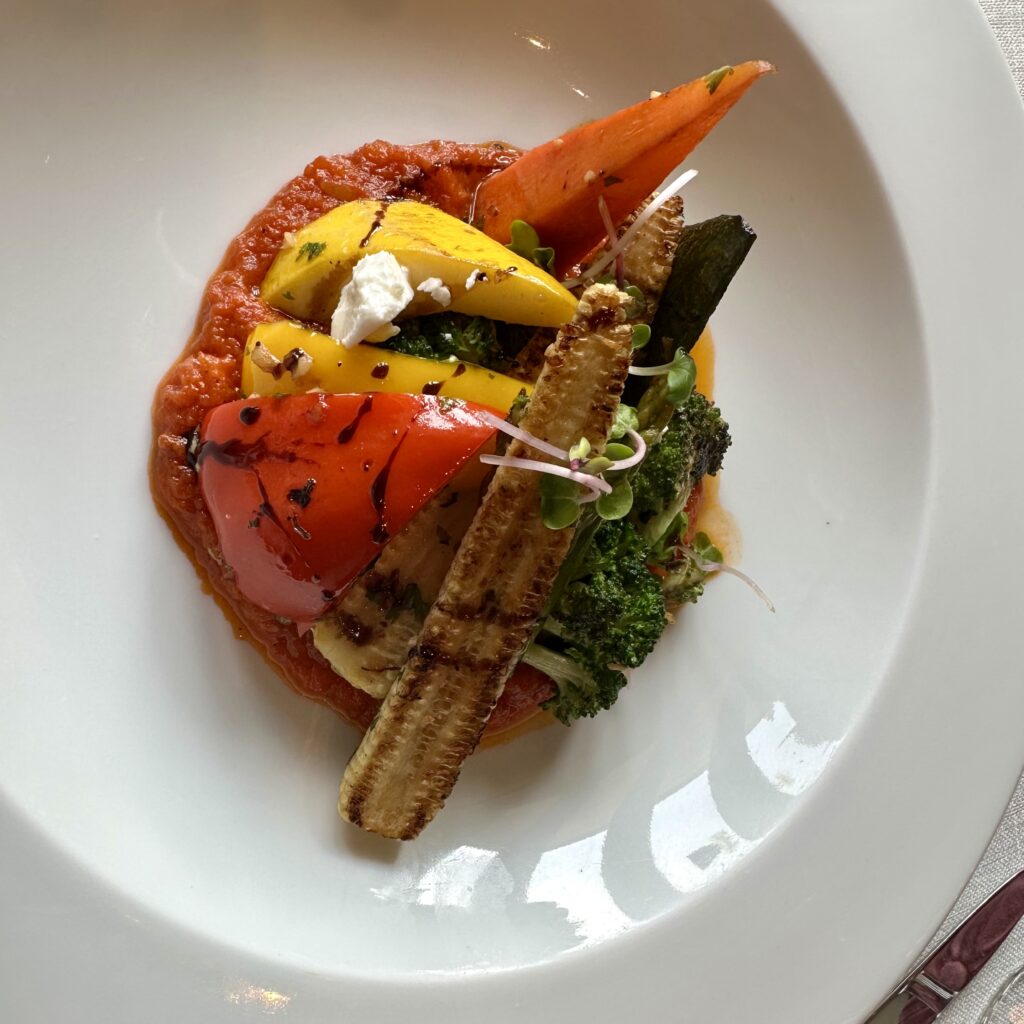
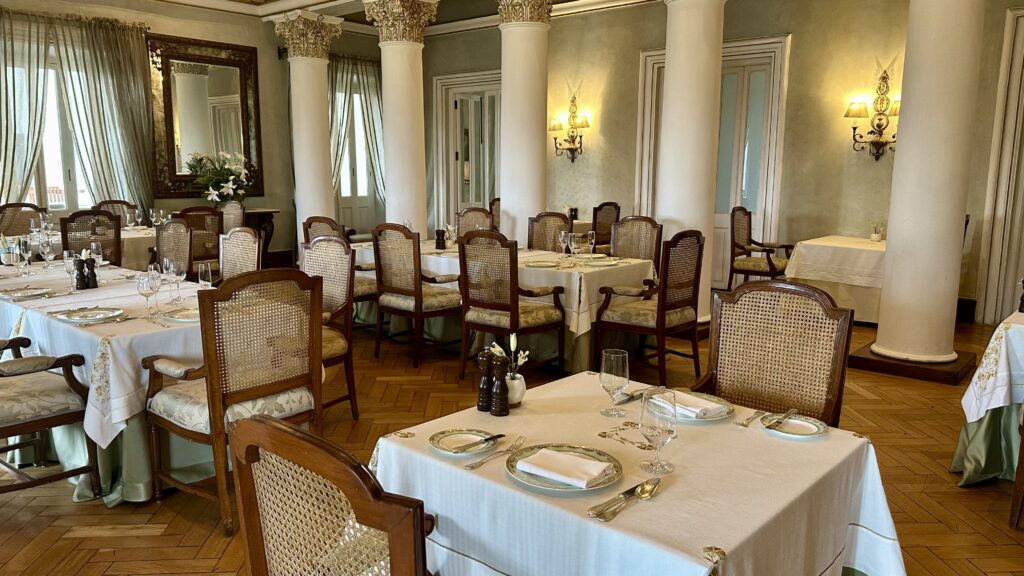
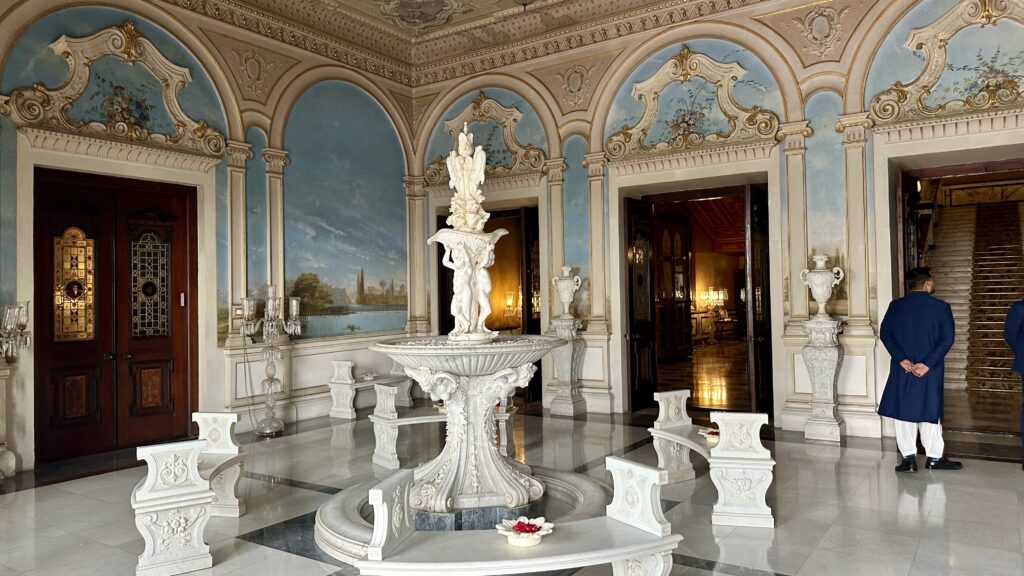
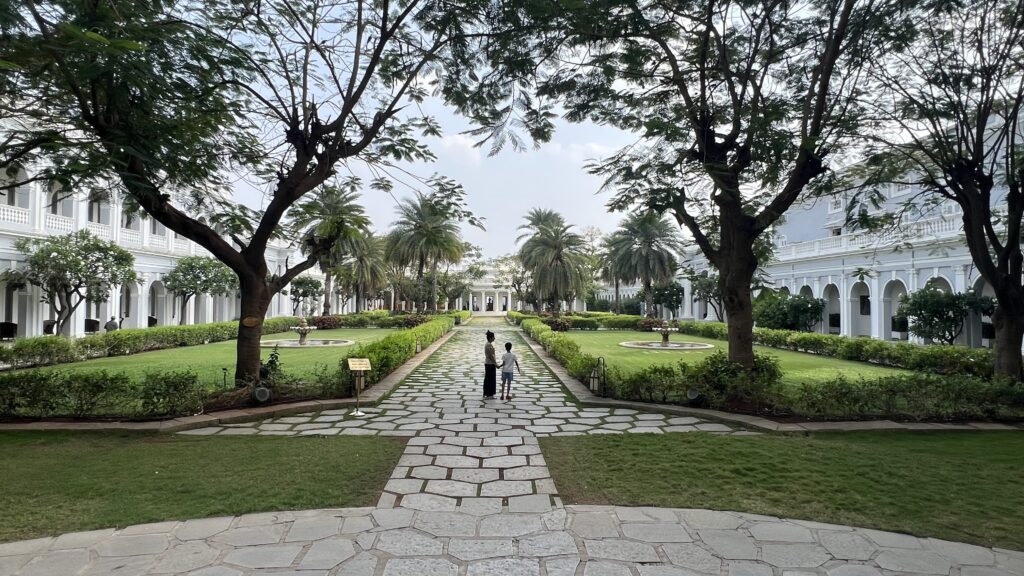
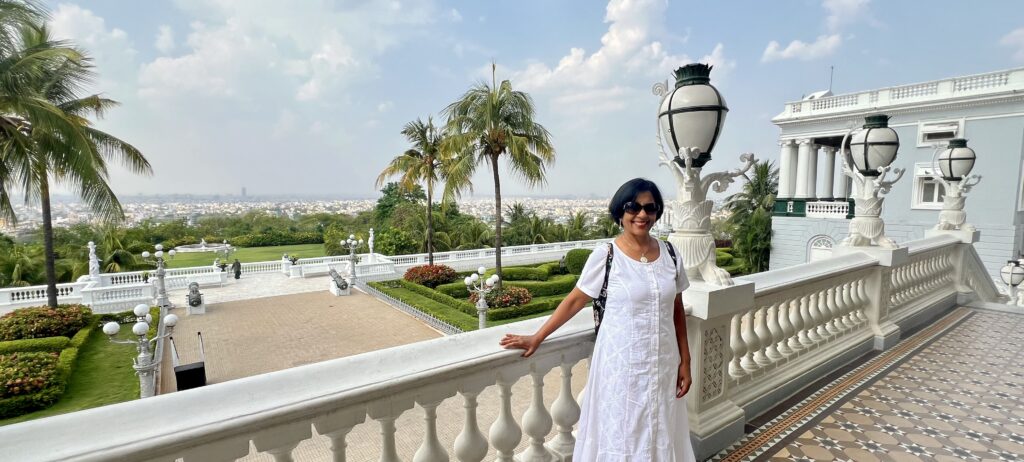
Salar Jung Museum – This museum is famous for being the largest one-man collection of art objects, manuscripts, and books in the world. The collection in the museum consists of Indian Art, Far Eastern Art, European Art, Children Art, Middle Eastern Art, as well as Founders gallery and rare manuscript section. One of the major attractions of the museum is the 19th Century British Musical Clock.
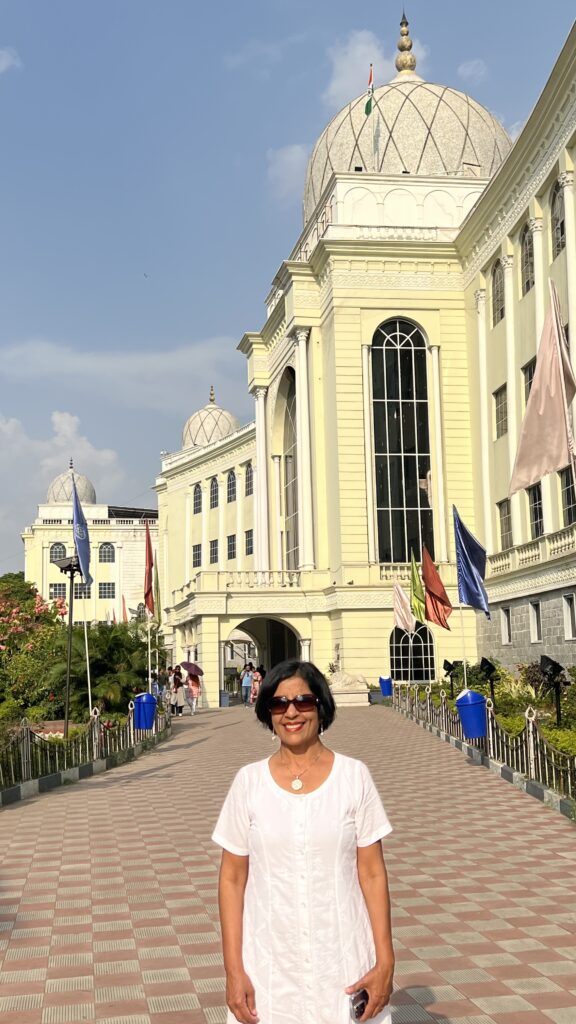
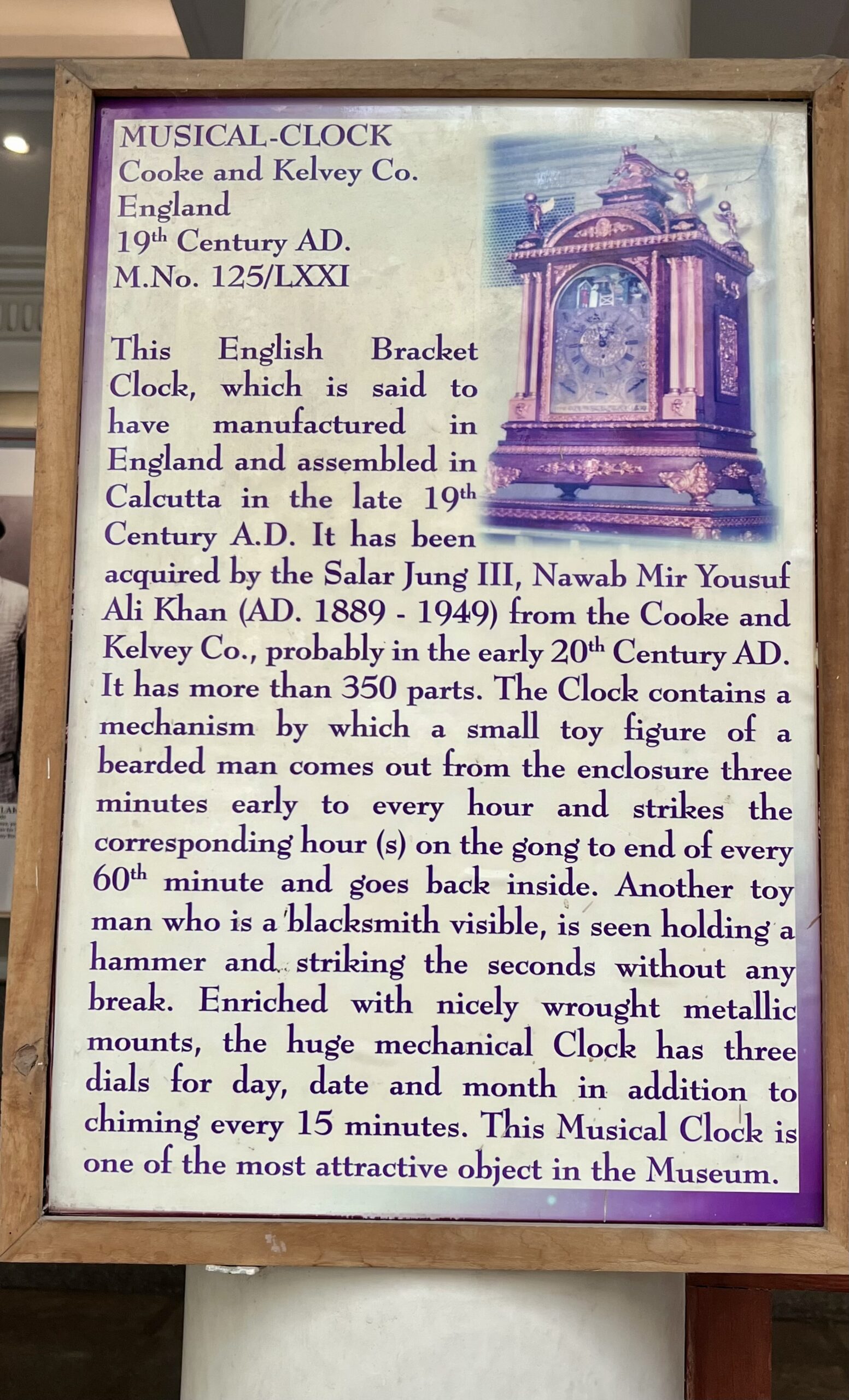
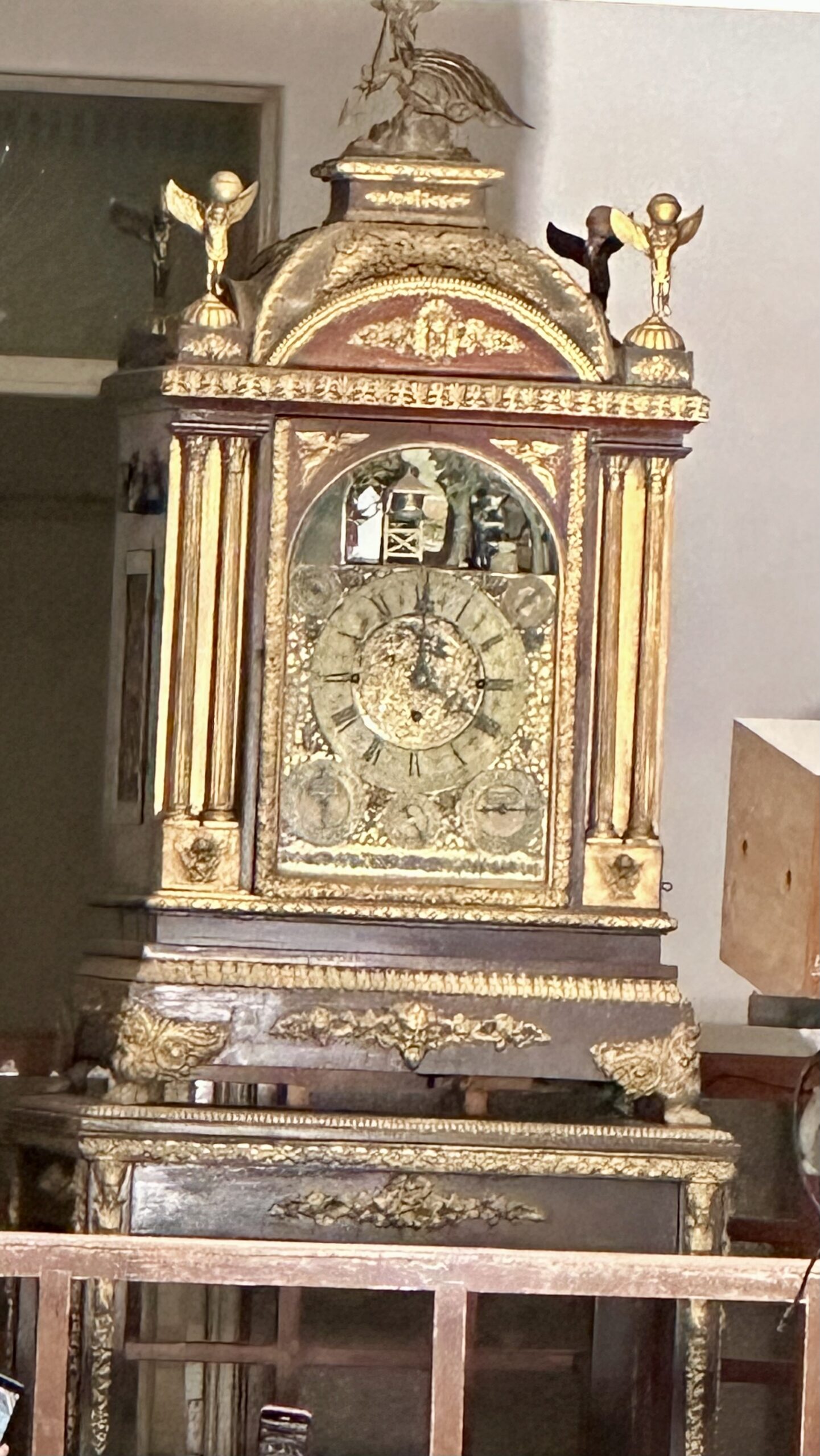
Other interesting collections include the veiled Rebecca, marble statue which was created by an Italian sculptor G B Benzoni in 1876 and was brought by Salar Jung I in 1876 while on his trip to Italy, is another highlight that attracts most of the attention. There is also a set of ivory chairs, which was presented to Tippu Sultan of Mysore by to Louis XVI of France. Rehal, the jade books stand; a dagger of Jehangir, a fruit knife of Noorjehan, both decorated with precious stones.
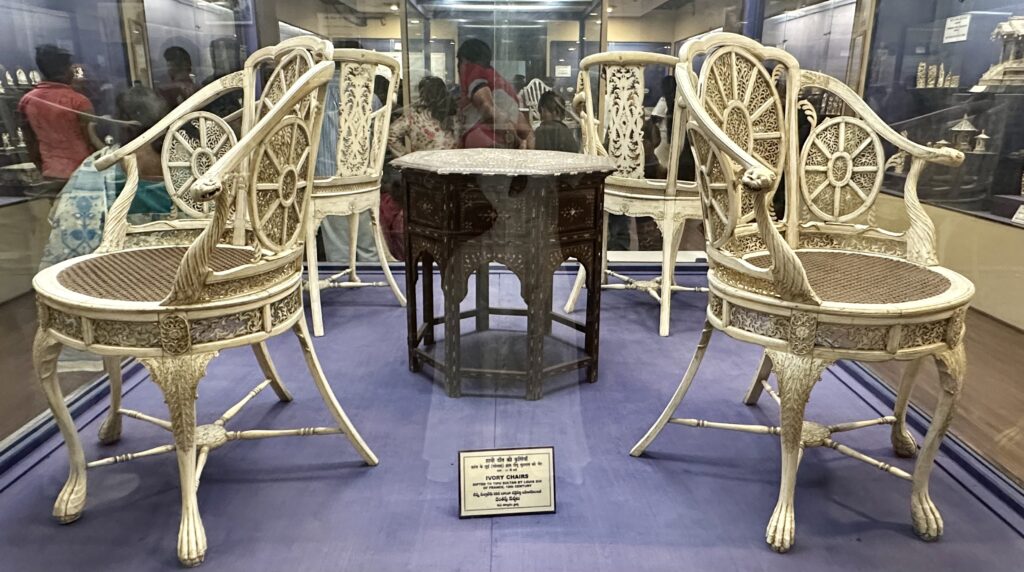
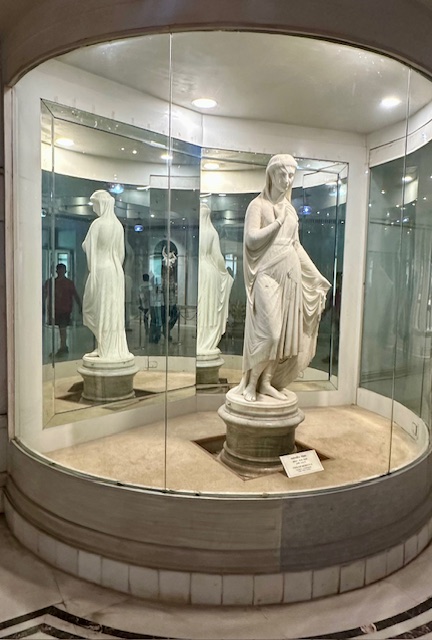
Hussain Sagar – Also referred to as Tank Bund, this is a heart-shaped lake built by Ibrahim Quli Qutb Shah in 1562. It is spread across an area of 5.7 square km and is fed by the River Musi. A large monolithic statue of the Gautama Buddha erected in 1992, stands on Gibraltar Rock in the middle of the lake. The lake separates the city center of Hyderabad from the neighborhood Secunderabad. The road along the eastern side of the lake connects the twin cities of Hyderabad and Secunderabad. One can enjoy scenic walks, and bicycle rides, or simply relax on a park bench and soak in the vibrant atmosphere.
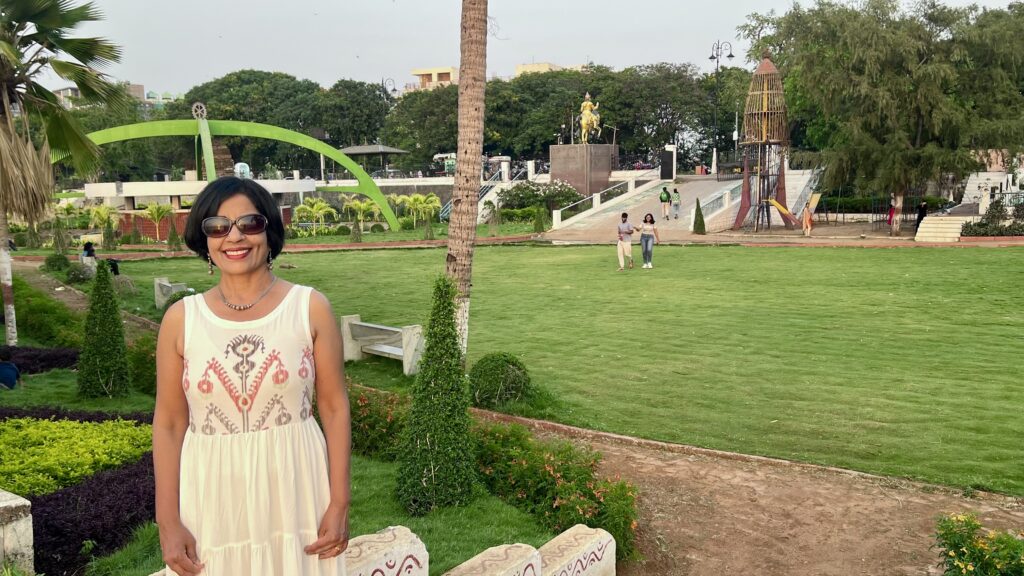
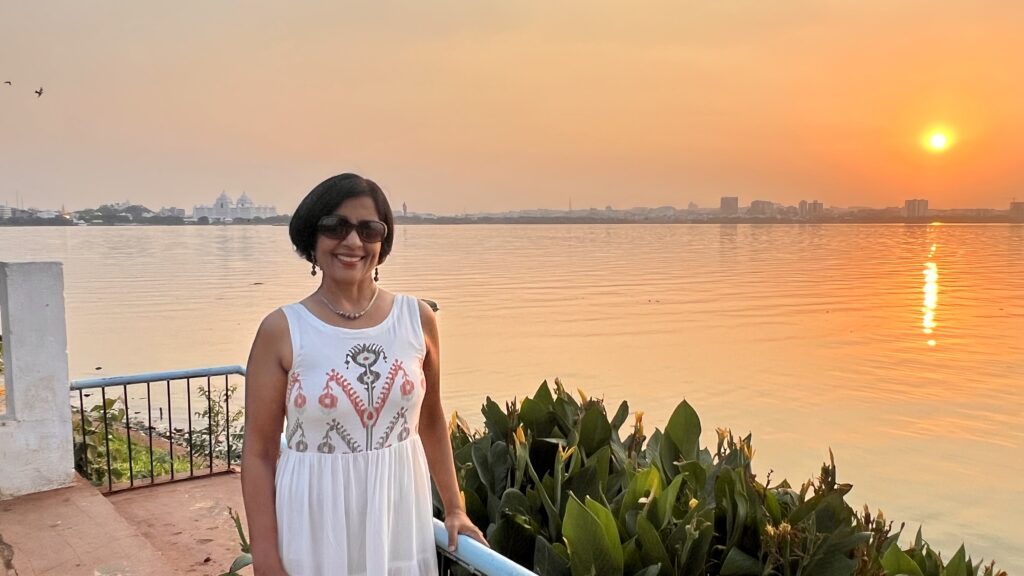
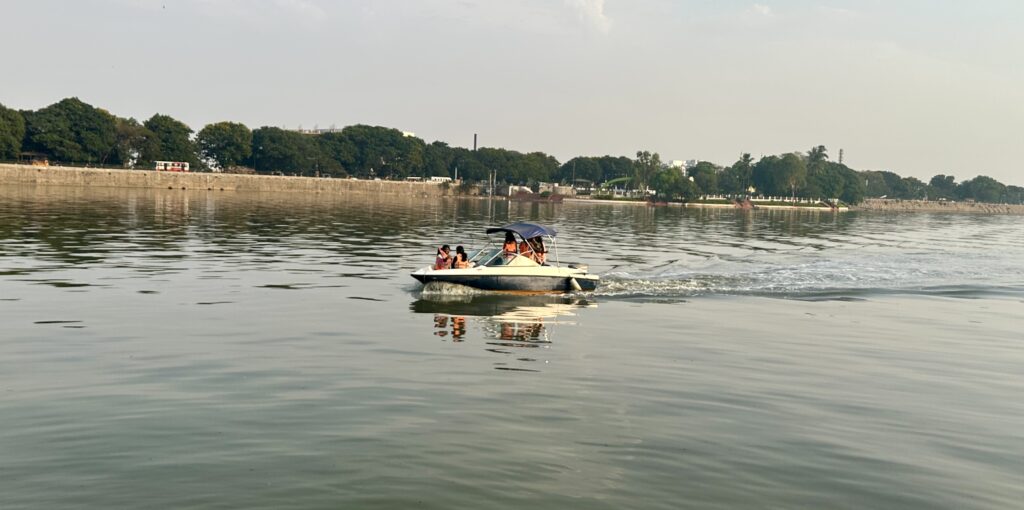
Birla Mandir – This Hindu Temple was built in 1976 by Birla Foundation on a 280 feet high hillock called Naubath Pahad. It was constructed entirely with white marbles imported from Rajasthan. The main shrine is dedicated to Lord Venkateswara. The temple also houses separate shrines for various other gods including Shiva and Andal.
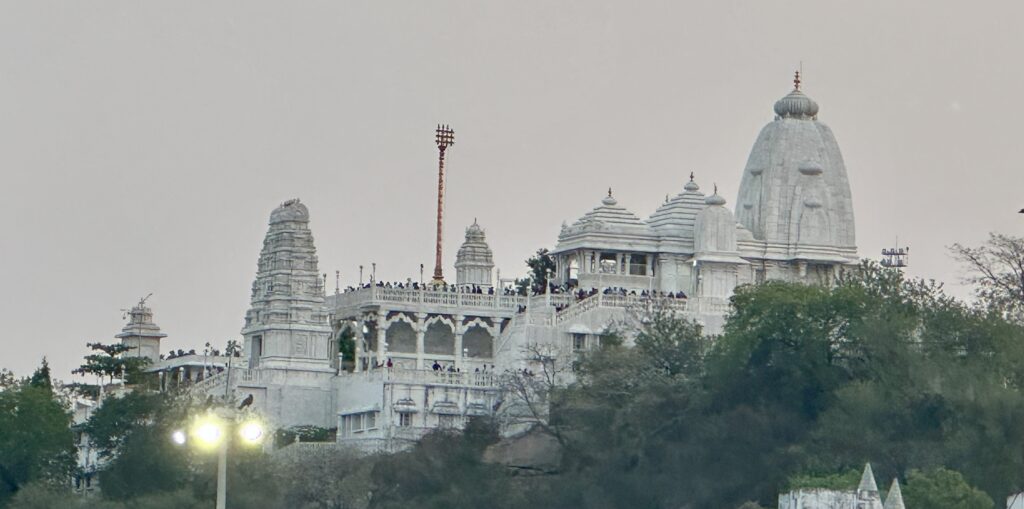
Telangana Secretariat and Ambedkar Statue – This imposing neo-classical structure, adorned with a majestic clock tower, houses the Telangana state government’s administrative offices. It was built between 2021-2023 and replaces the old secretariat building. It is worth a 15 min stop to admire the stunning building and the meticulously landscaped gardens surrounding the building.
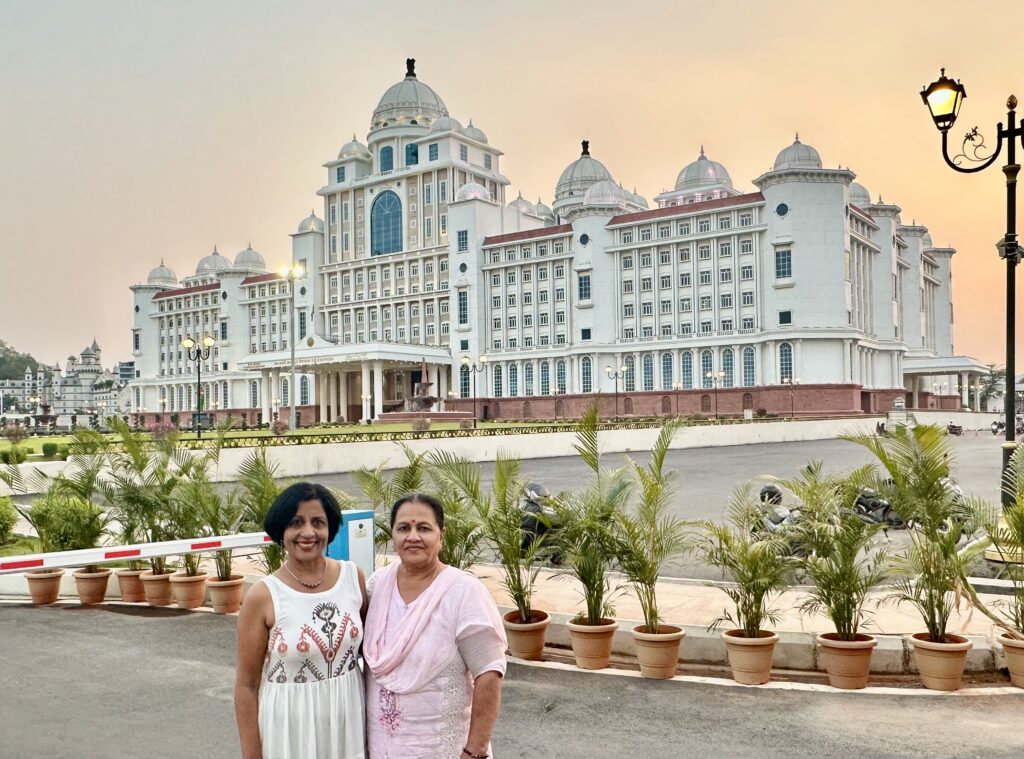
Dr. B. R. Ambedkar Statue – A little further down from the Secretarial building is the 125 ft tall Dr. B. R. Ambedkar Statue. The statue was built between 2021-2023 and unveiled on 14 April 2023 on the occasion of his 132nd birth anniversary. Bhimrao Ramji Ambedkar (1891–1956) was an Indian jurist, economist, social reformer and political leader who chaired the committee that drafted the Constitution of India. At a later stage of his life, he renounced Hinduism, converted to Buddhism and inspired the Dalit Buddhist movement.
Martyrs’ Memorial (Amara Deepam) – This memorial is on the banks of the picturesque Hussain Sagar lake in the heart of the city. You can visit this memorial on the way to the Secretarial building. It is shaped like a lamp (Diya) and was inaugurated in 2023. It is a tribute to those who laid down their lives for statehood to Telangana.
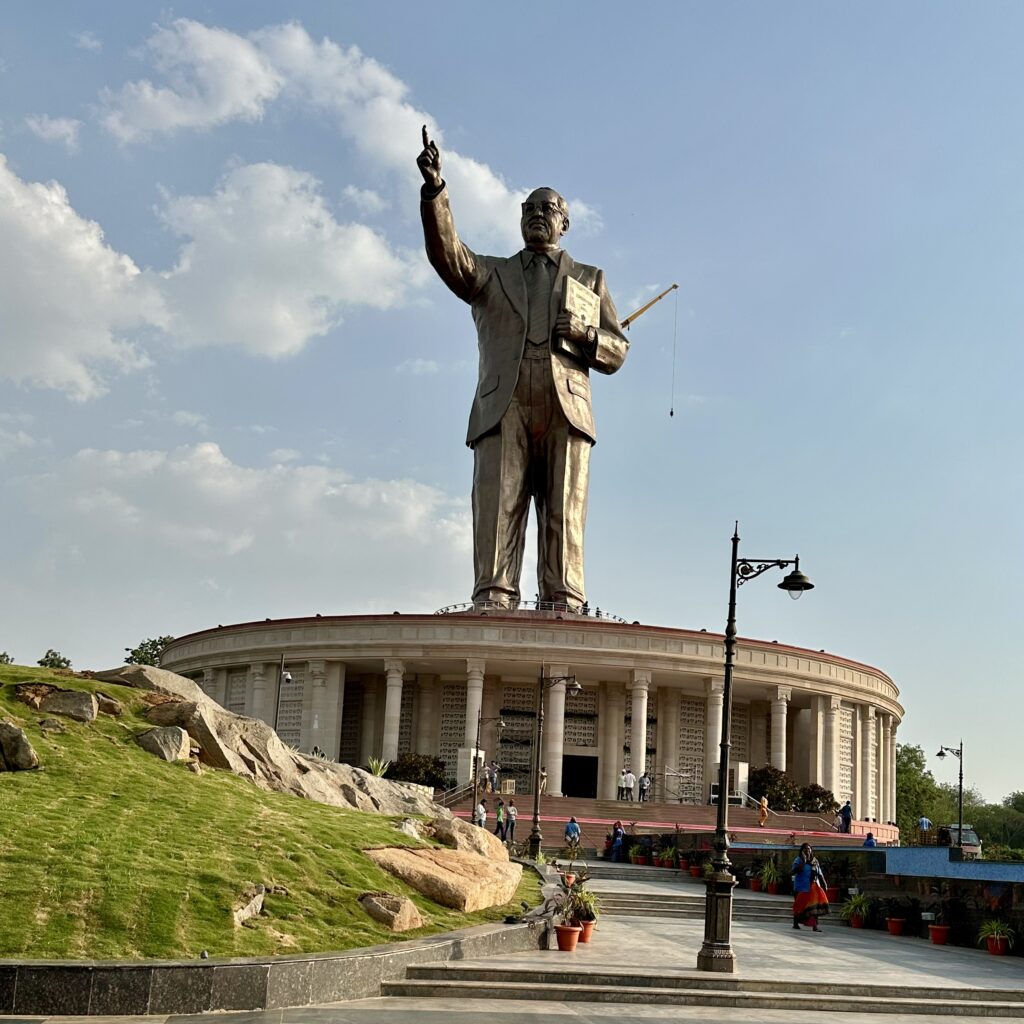
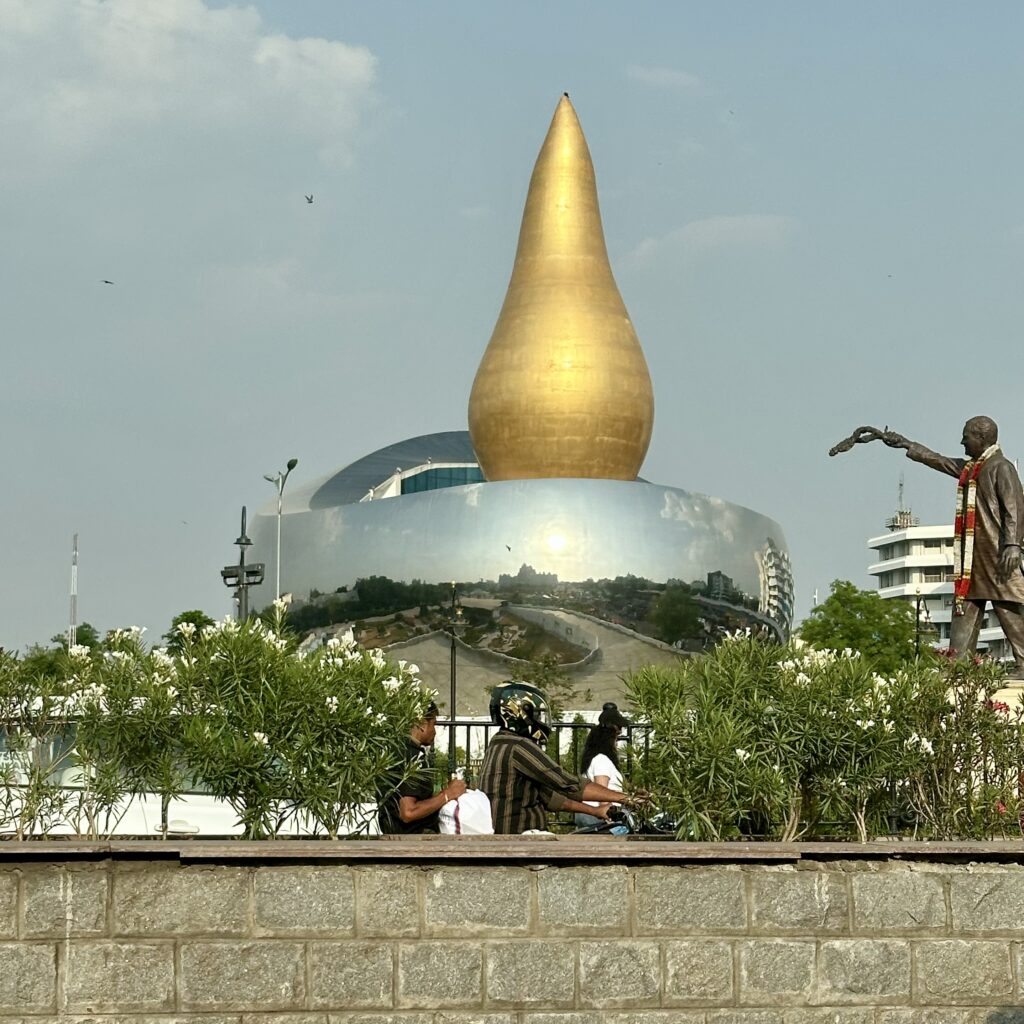
Golconda Fort – a fortified citadel and ruined city located on the western outskirts of Hyderabad. The fort was originally built by Kakatiya ruler Prataparuda in the 11th century out of mud walls. Because of the vicinity of diamond mines, especially Kollur mine, Golconda flourished as a trade center of large diamonds known as Golconda Diamonds, several of which are or have been a part of crown jewels. The fort is in the UNESCO “tentative list” to become a World Heritage Site.
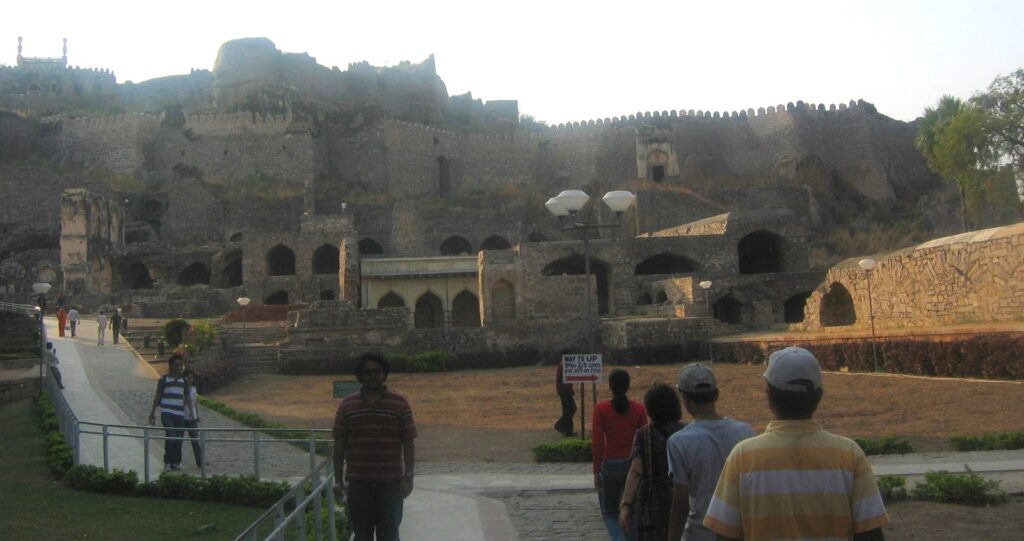
Golconda Fort, Bala Hisar Gate – The expansion of the fort by various rulers across time has led to a unique mixture of Indo-Islamic architectural design. This fusion of culture in architecture is most noticeable at the Bala Hisar gate, the fort’s main entrance on its eastern side, built in the 16th century by the Qutb Shahi Sultanate. The gate’s design is symmetrical and displays a combination of mythological animals from both Hindu and Persian mythology. Yalis (Hindu mythological beasts that resemble a fusion of elephant, lion, and snake) which act as guardians and ward off evil spirits; Swans are a sacred Hindu symbol of wisdom, spiritual purity, and goodness; Peacocks symbolize exquisiteness, purity, prosperity, magnificence, and rebirth; Shirdals, which are a mixture of a lion and an eagle and feature prominently in Persian mythology.
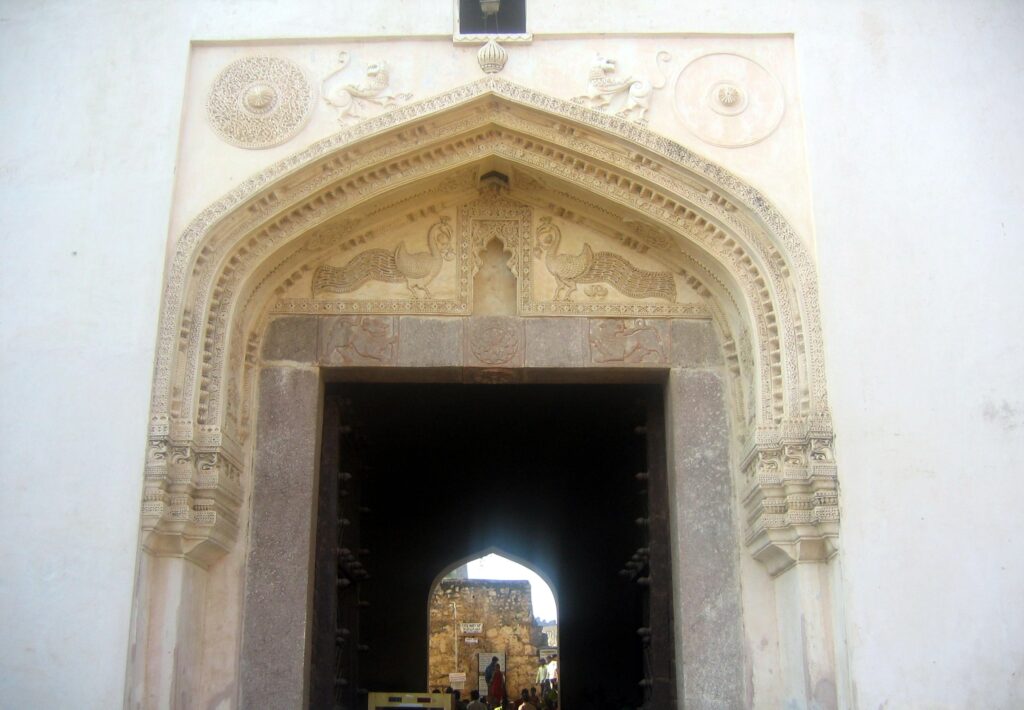
Golconda Fort, Arched Hall – The fort complex includes various halls with arched designs, contributing to the overall architectural style of the structure. These arches not only served aesthetic purposes but also played a role in ventilation and light distribution within the fort. The arched hall is purely functional, made to last centuries, capable protecting men, material and animals from enemy attacks & nature’s forces.
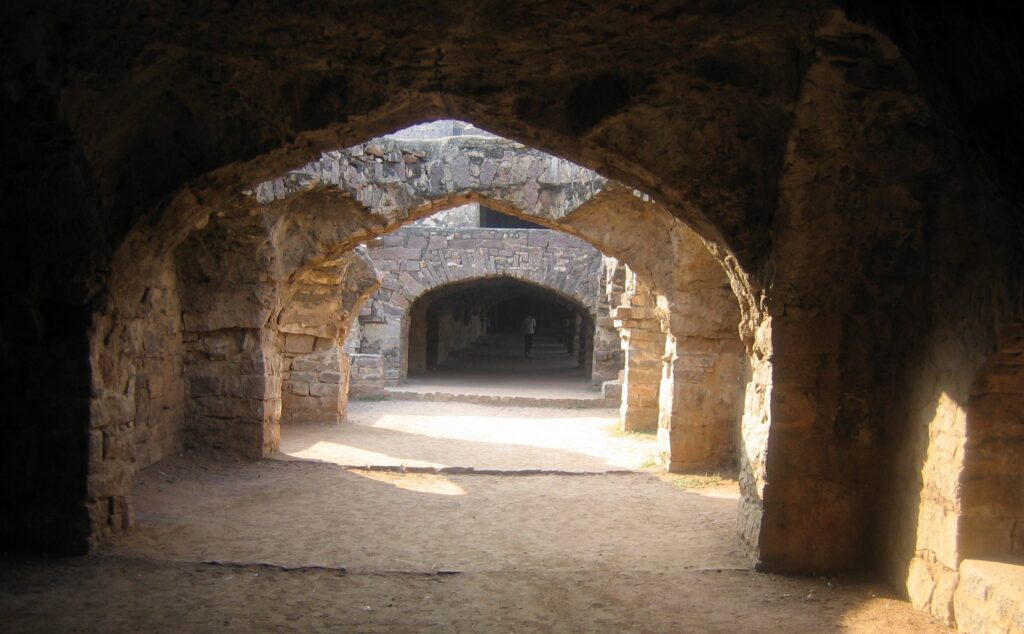
Golconda Fort, Taramati Mosque – This mosque is outside the palace area, built by Qutb Shahi rulers and their nobles. Its facade has three arches; the central arch is higher. Qibla niches in the west wall are surrounded by rows of small arches. Directly below the entrance arches is a basement platform consisting of a series of arched cells.
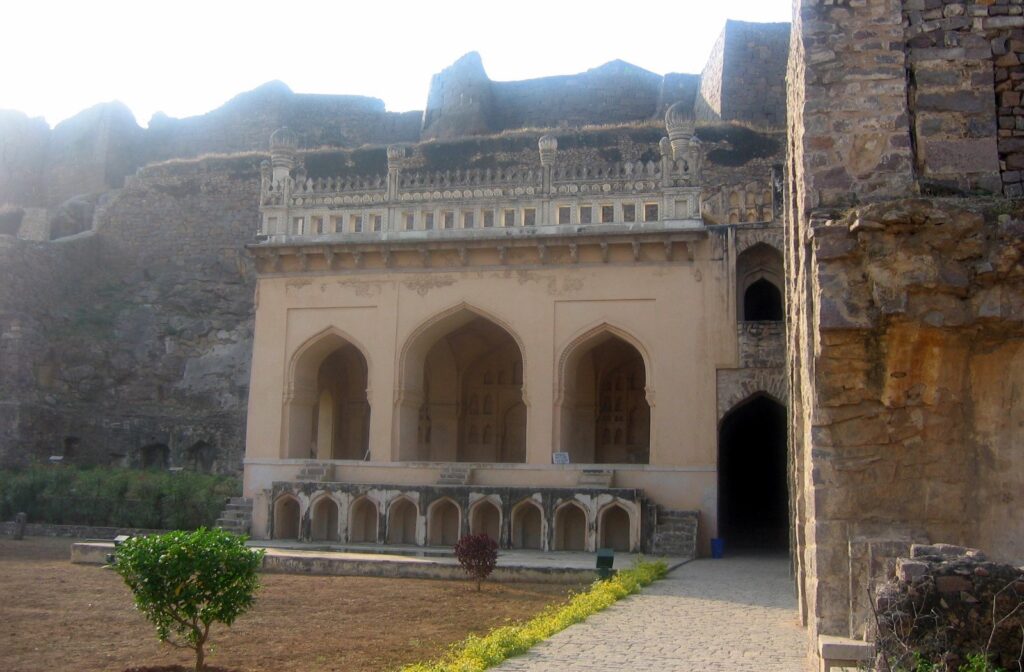
Golconda Fort, Rani Mahal – This was the primary residence for the women of the royal family. The palaces within Rani Mahal reflect a Persian design, with high ceilings, decorative niches, alcoves, and cornices. The mahal’s construction and decorations suggest a life of luxury and grandeur for the women who resided there, rivaling even the Mughal courts.
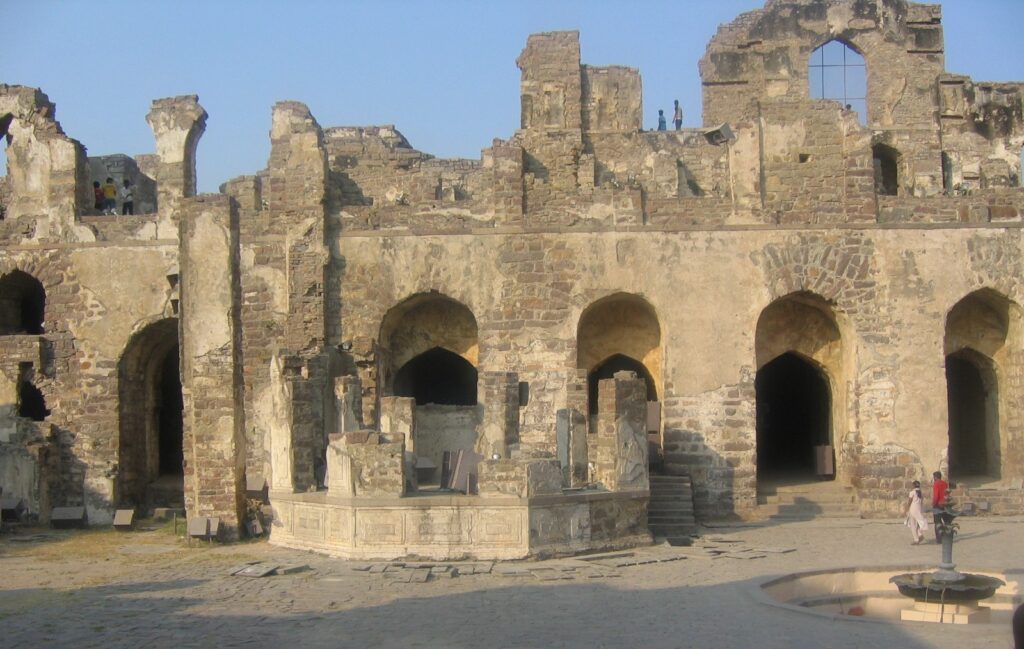
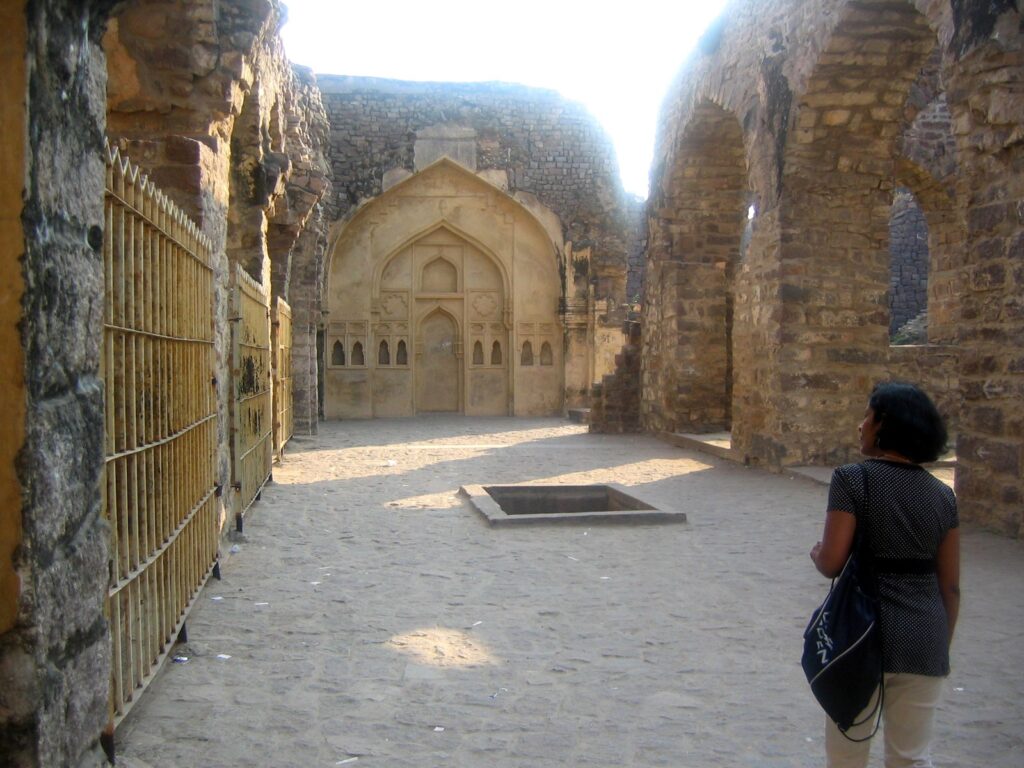
Osmania University College for Women (Renamed Telangana Mahila Vishvavidhyalayam) – Between 1979-1982, I did my undergraduate in this college which is located in Koti, an area in Hyderabad’s old city. The main building of this college, which was part of the British colonial era in India, is a monument of great aesthetic, architectural and historical importance. It is a huge college with old buildings and spacious classrooms. All major cultural events including graduation ceremonies took place in the stunning Durbar Hall which was recently renovated to its old glory.
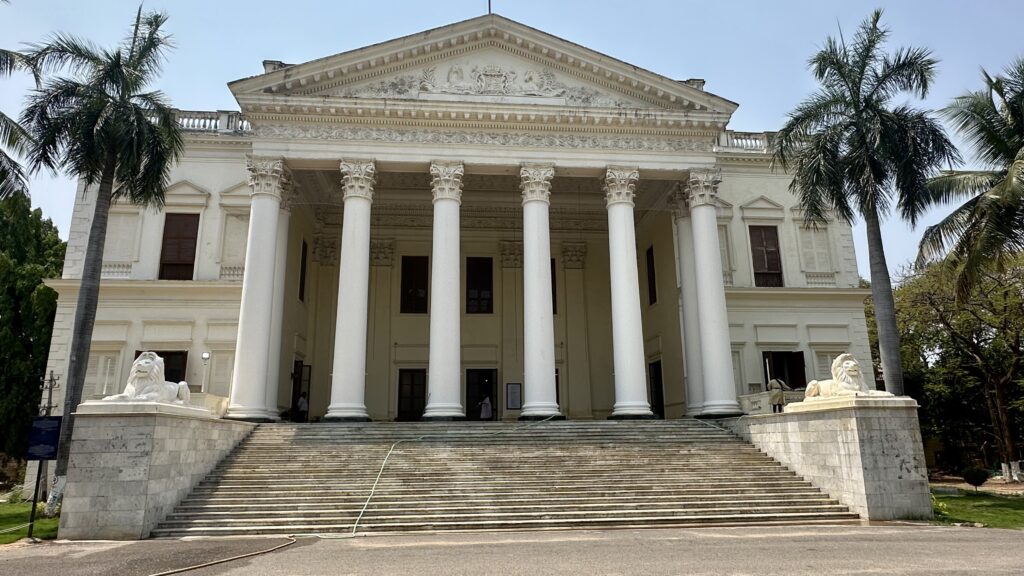
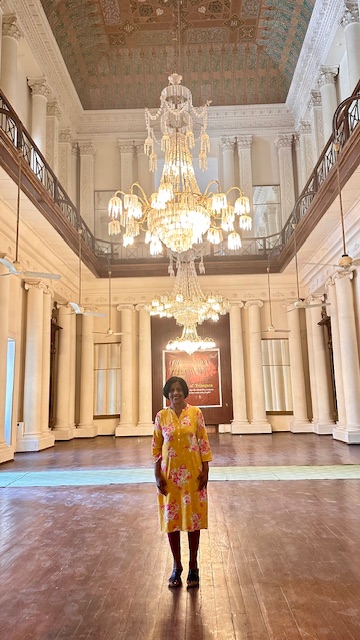
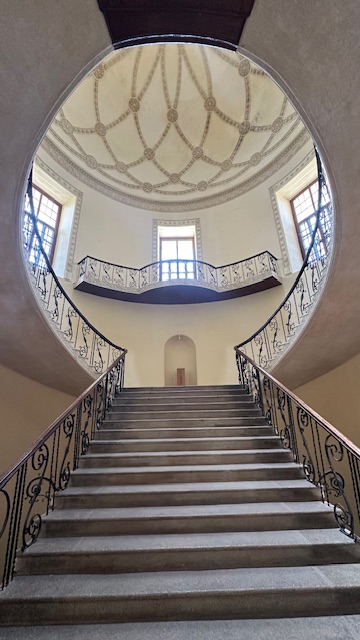
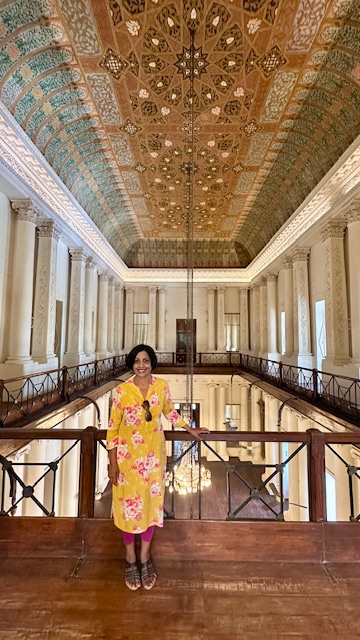
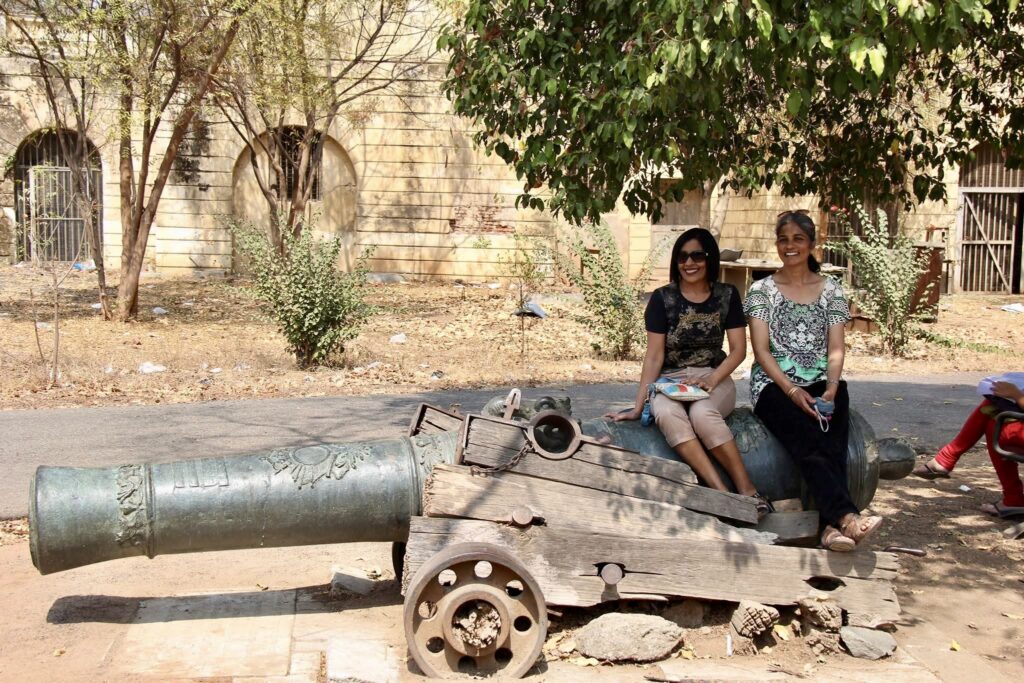

University of Hyderabad – Between 1982-1984, I did my MS in Physics at this University which is located in Gachibowli. Founded in 1974, the university campus is on 2300-odd acres, and has a large area under forest cover, with two perennial and three seasonal lakes, and some rock formations characteristic of the Deccan. In the 1980s, Gachibowli was isolated with no sign of life for miles. We stayed in a hostel within the university campus during the week and travelled home during weekends.
In 2015, when my friend and I decided to visit the university, we found that the area around the university was completely transformed as the city of Hyderabad had expanded all the way to Gachibowli. At the university, we could not recognize any of our classrooms. We recognized one of our professor who was still teaching there and he remembered us.
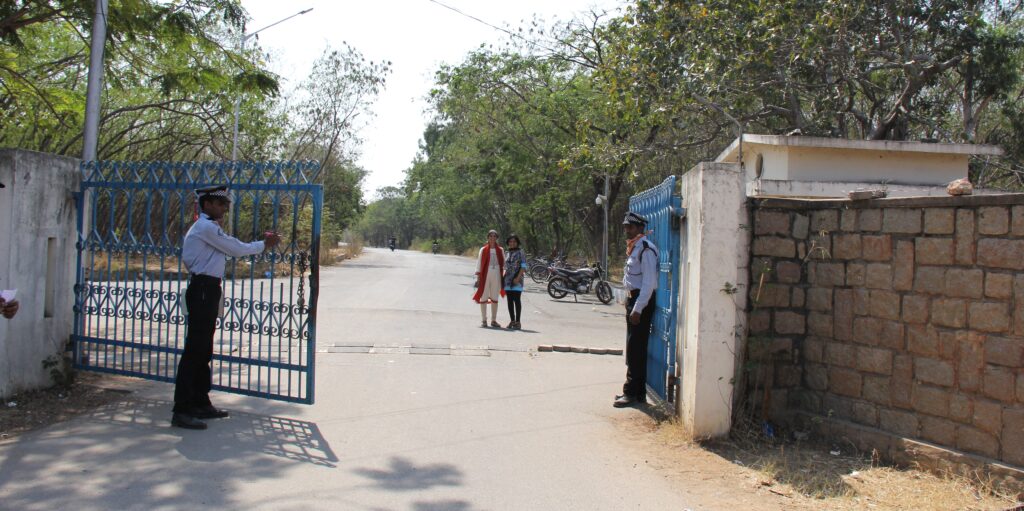
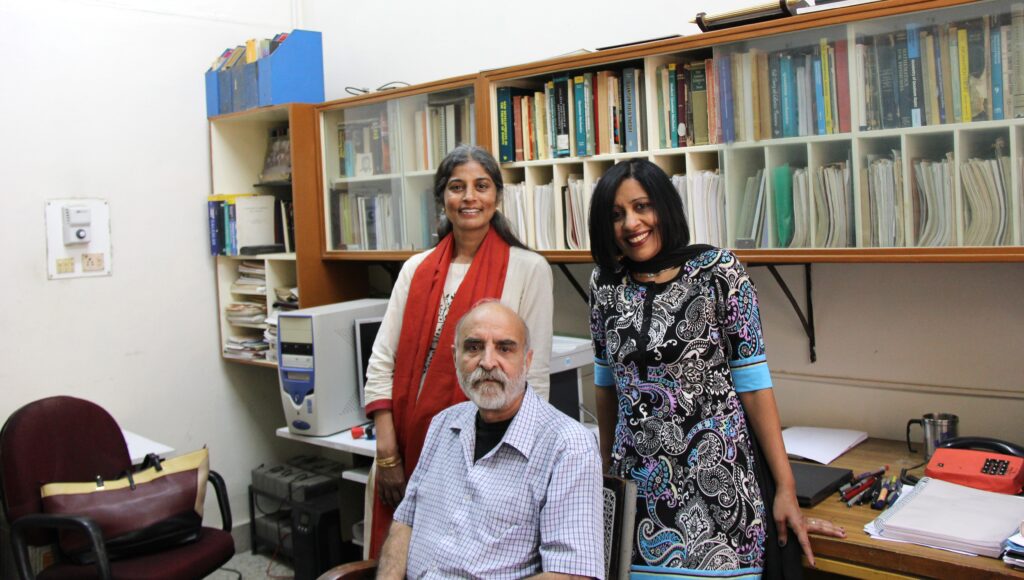
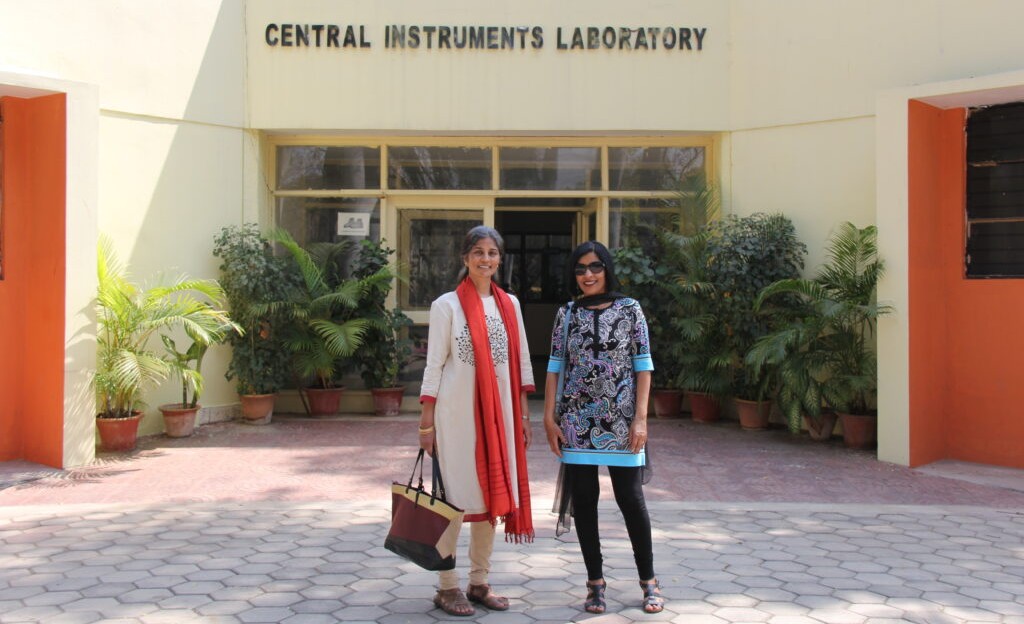
Irani café – The main reason we used to visit Irani cafe was for their sweet and milky tea and buttery biscuits. The Irani cafe culture dates back to the time when a group of settlers from Persia introduced Irani Chai (tea) which became popular in Hyderabad. The people in Old City start their day with cups of Irani Chai.
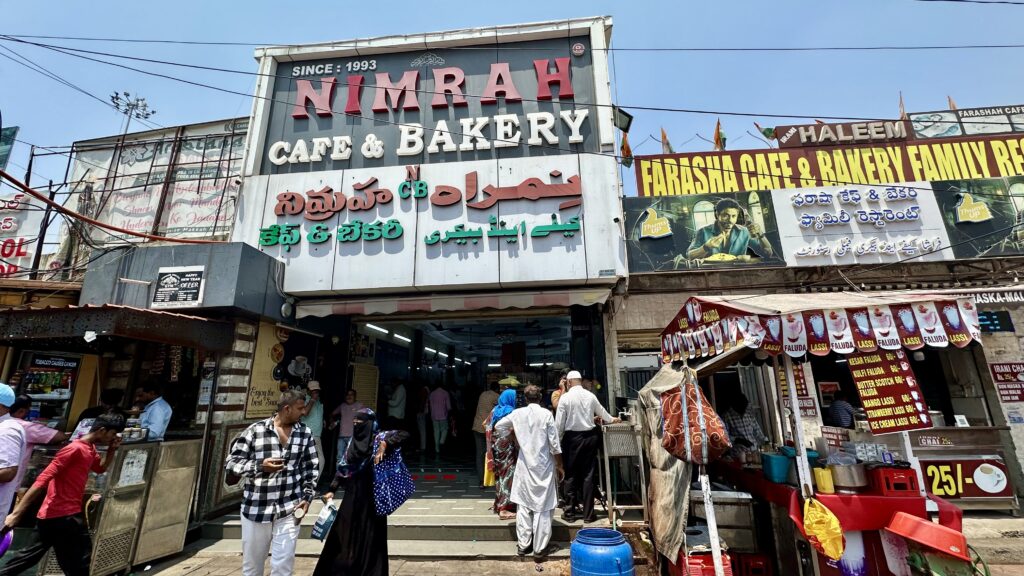
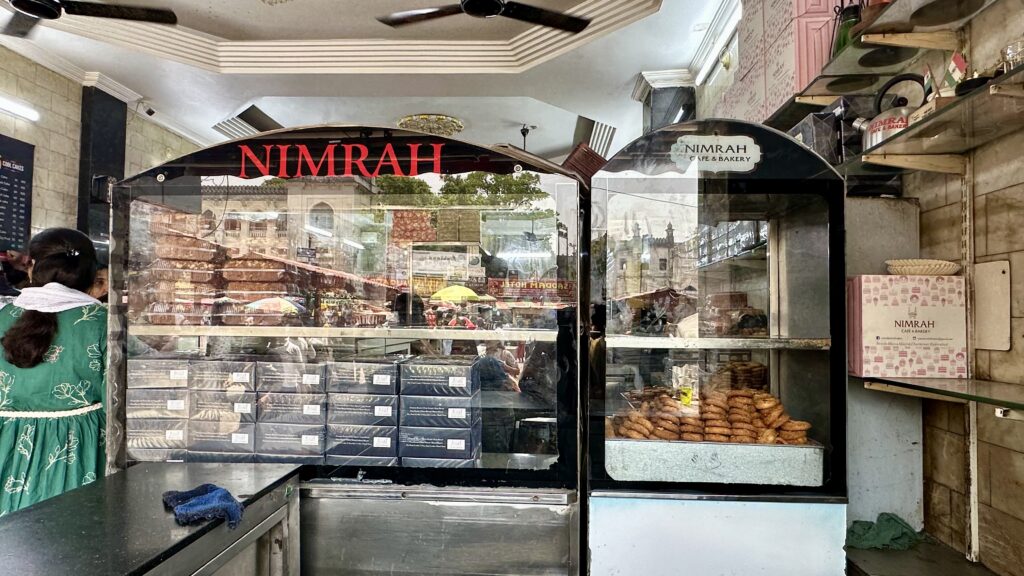
Hyderabadi Biryani – Made with basmati rice, meat, and spices, this dish originated in the kitchens of the Nizam of Hyderabad. Hyderabad was conquered by the Mughals in the 1630s, and ruled by its Nizams. Mughlai culinary traditions joined with local traditions to create Hyderabadi cuisine, one of which is the popular Hyderabadi Biryani.
